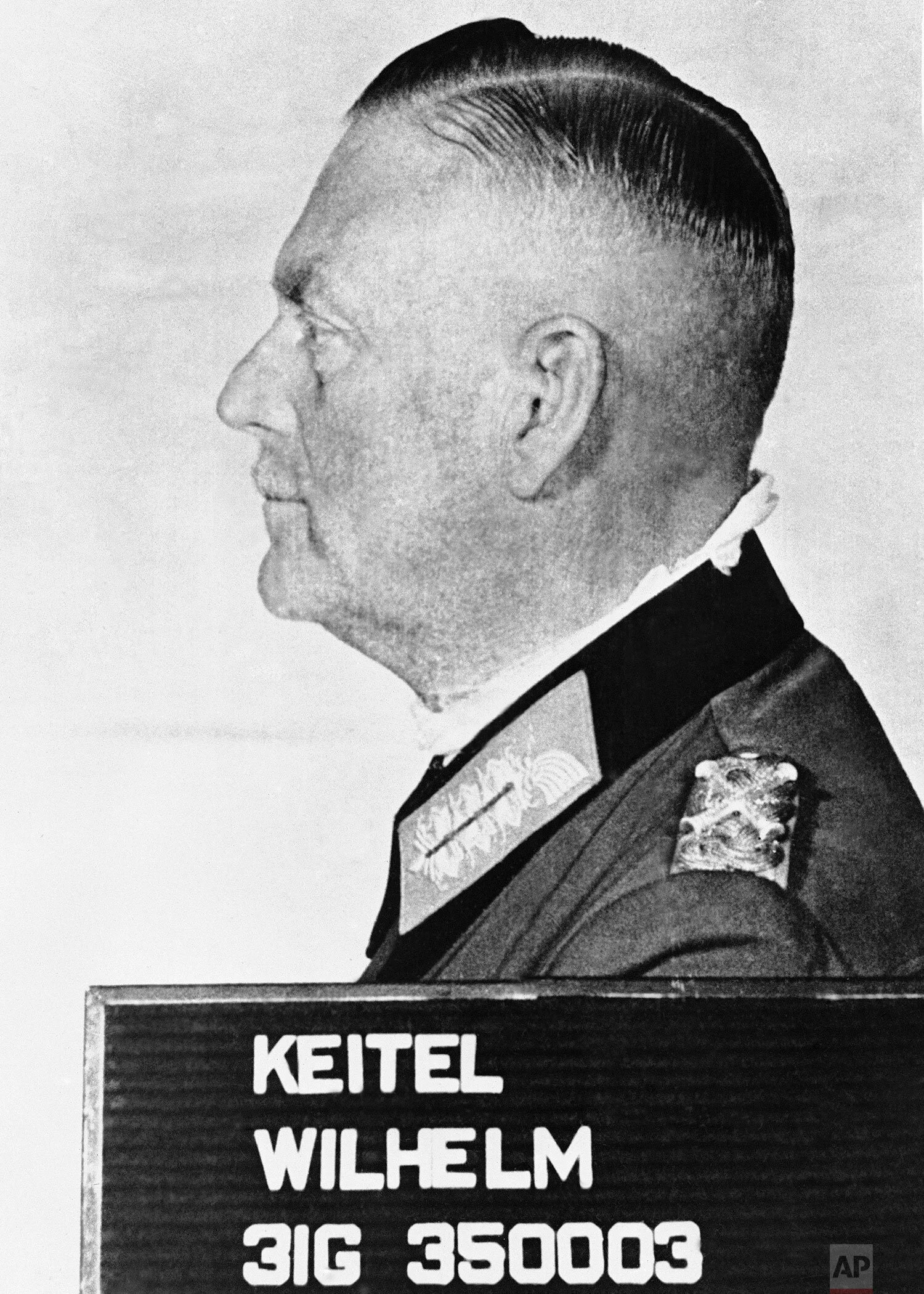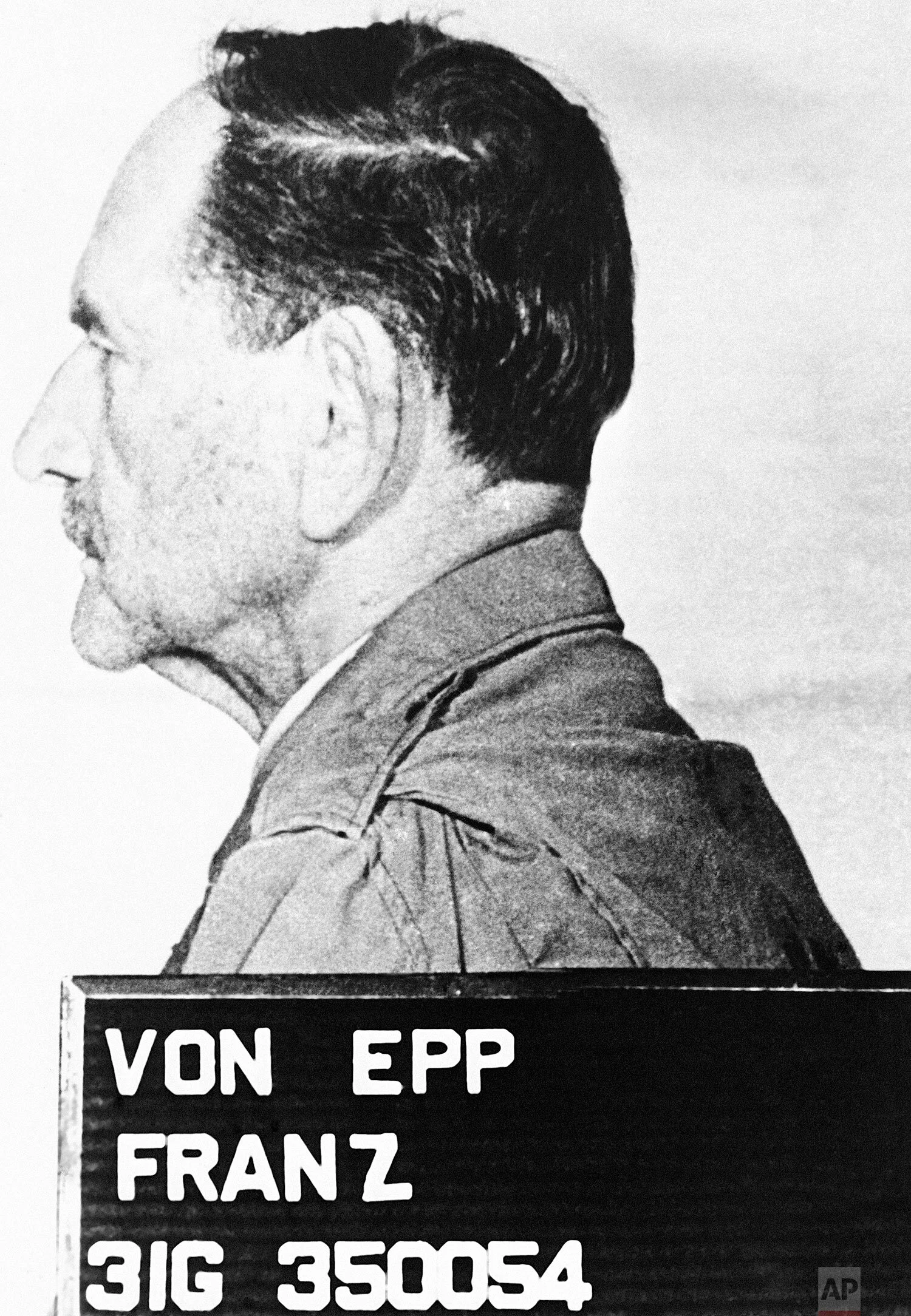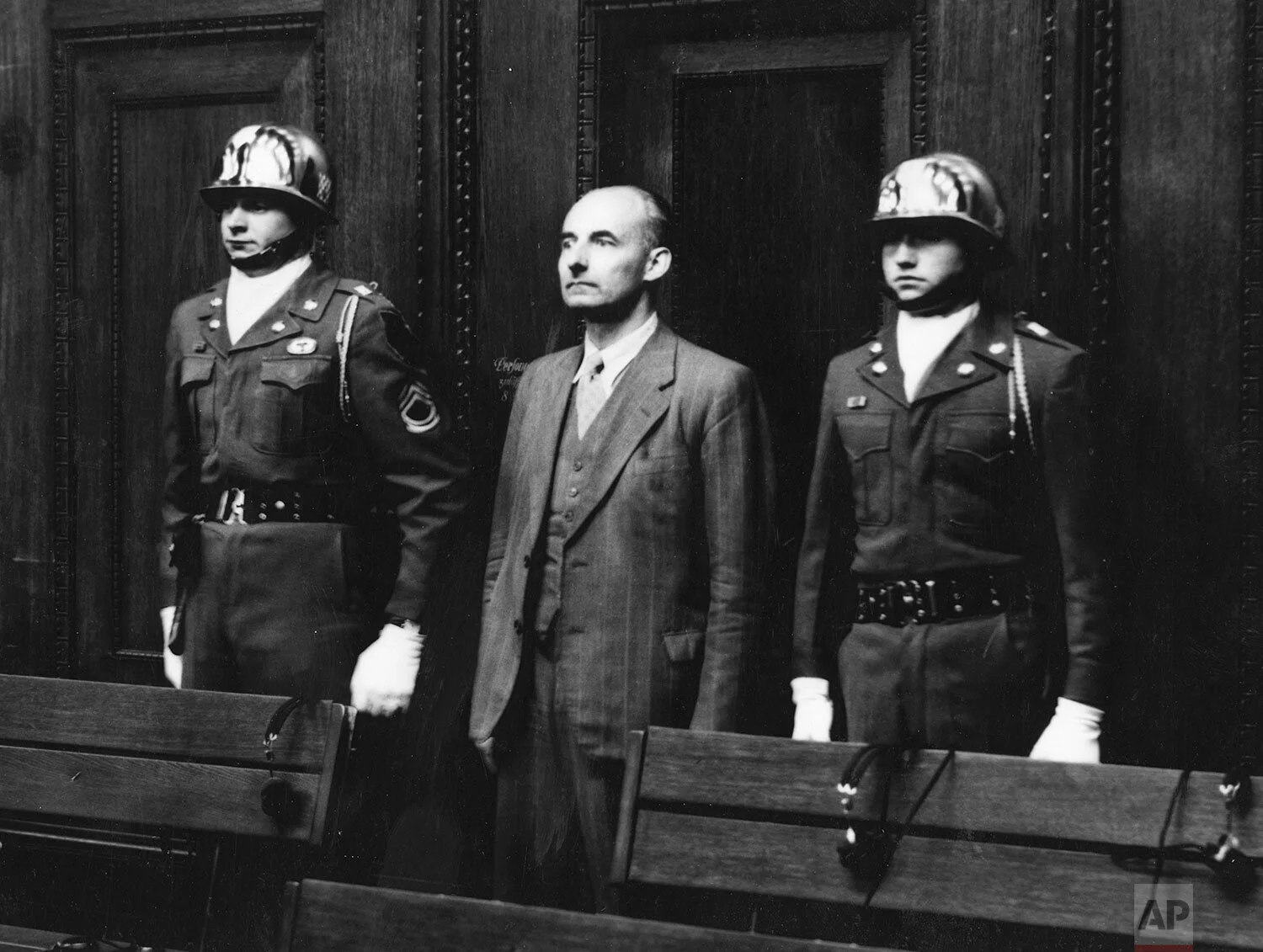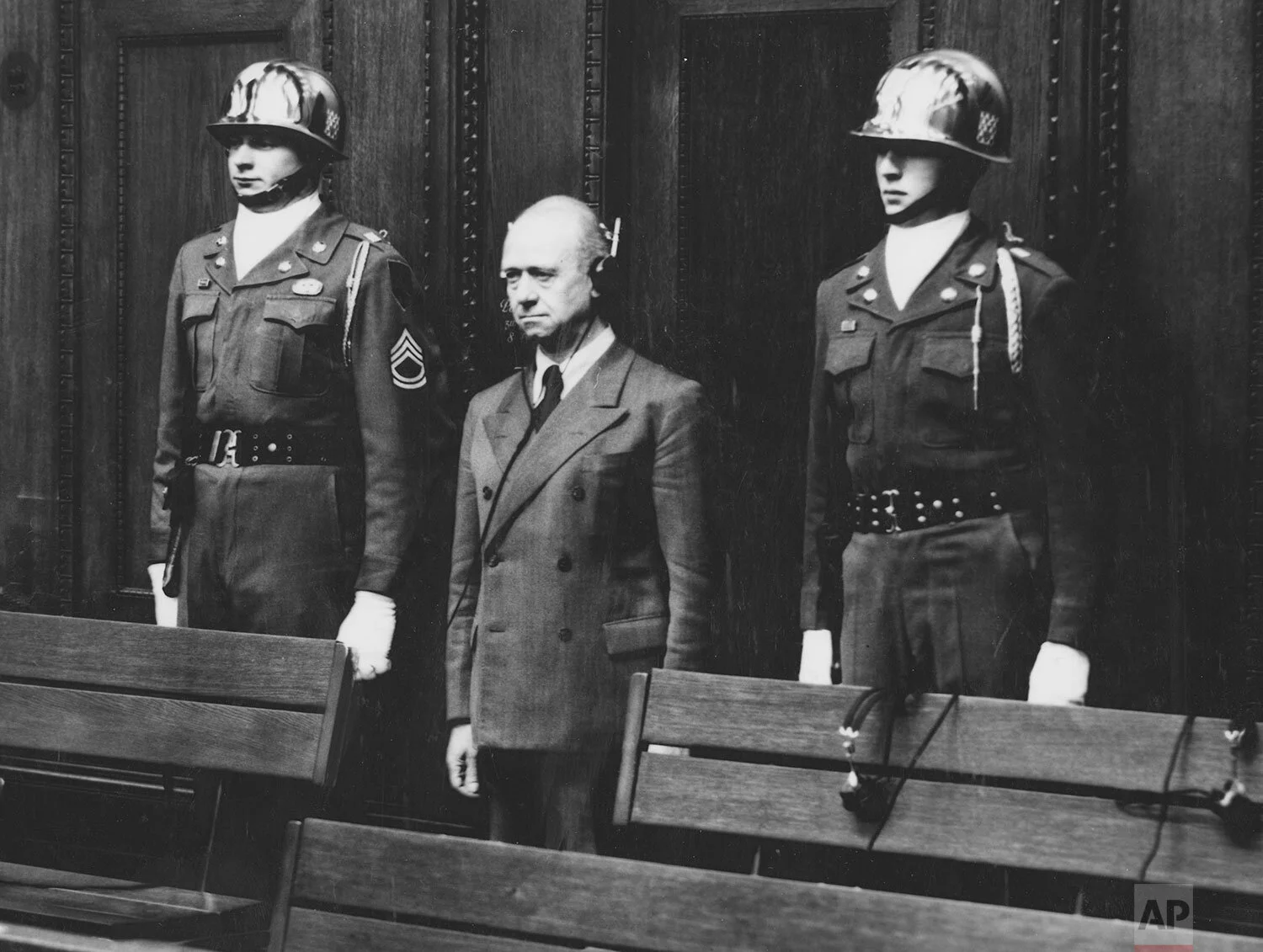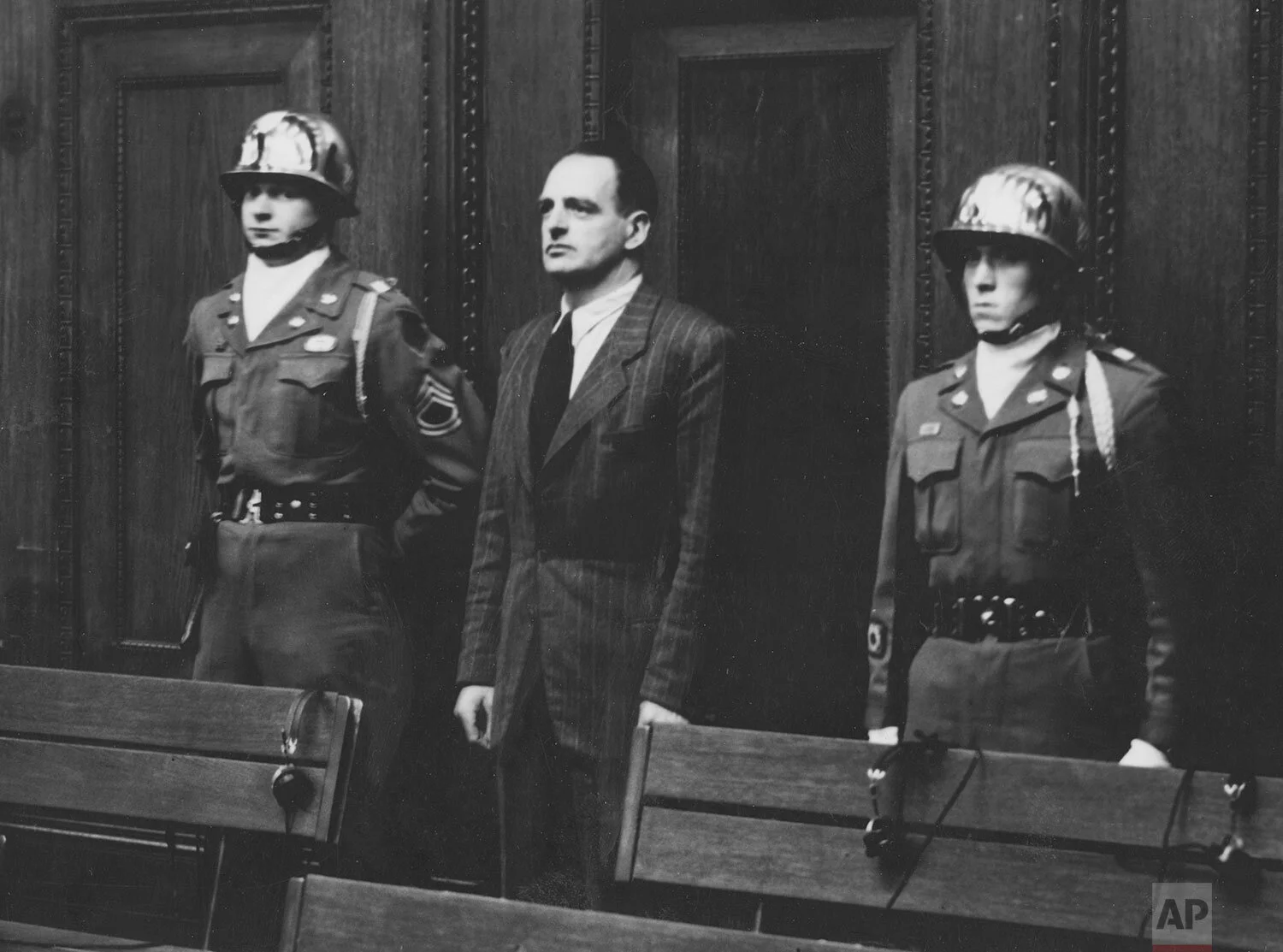75 years since Nuremberg trials began

Seventy-five years ago, the dock of Courtroom 600 of the Nuremberg Palace of Justice was packed with some of the most nefarious figures of the 20th Century: Hermann Goering, Rudolf Hess, Joachim von Ribbentrop and 18 other high-ranking Nazis.
They weren’t yet known as war criminals _ it was a charge that didn’t exist until the Nuremberg trials that began on Nov. 20, 1945, in what is now seen as the birthplace of a new era of international law. The proceedings broke new ground in holding government leaders individually responsible for their aggression and slaughter of millions of innocents. Its legacy lives on in the International Criminal Court of today.
The city of Nuremberg is marking the anniversary in Courtroom 600 with a ceremony Friday that will include German President Frank-Walter Steinmeier as the guest of honor.
Here is a collection of pictures of the trials from the AP Images archive.
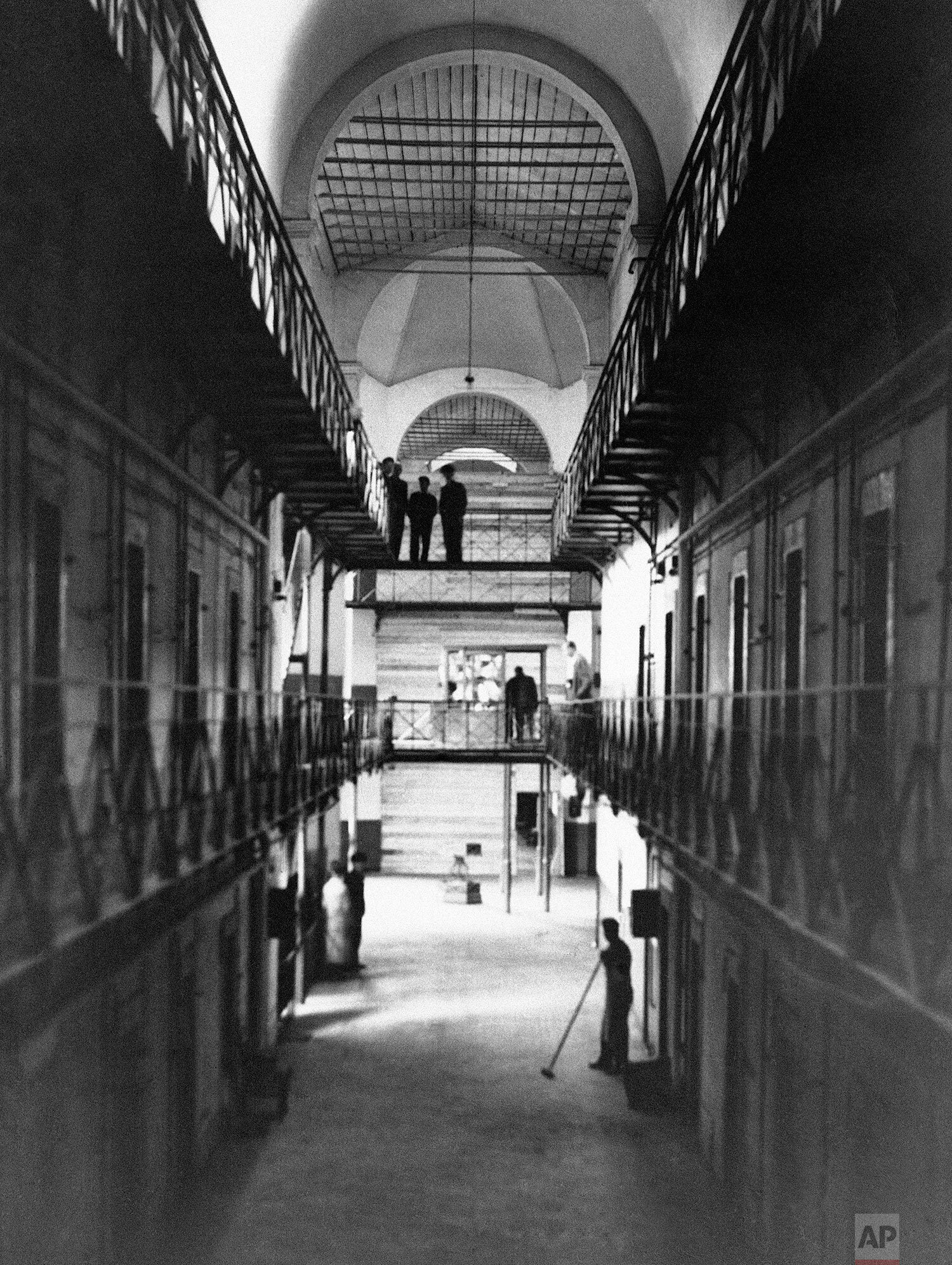
The cell block in the Nuremberg prison, Germany, on Aug. 30, 1945, which will house war criminals awaiting trial. At the end is seen a boarded up section where important prisoners will be housed. (AP Photo)
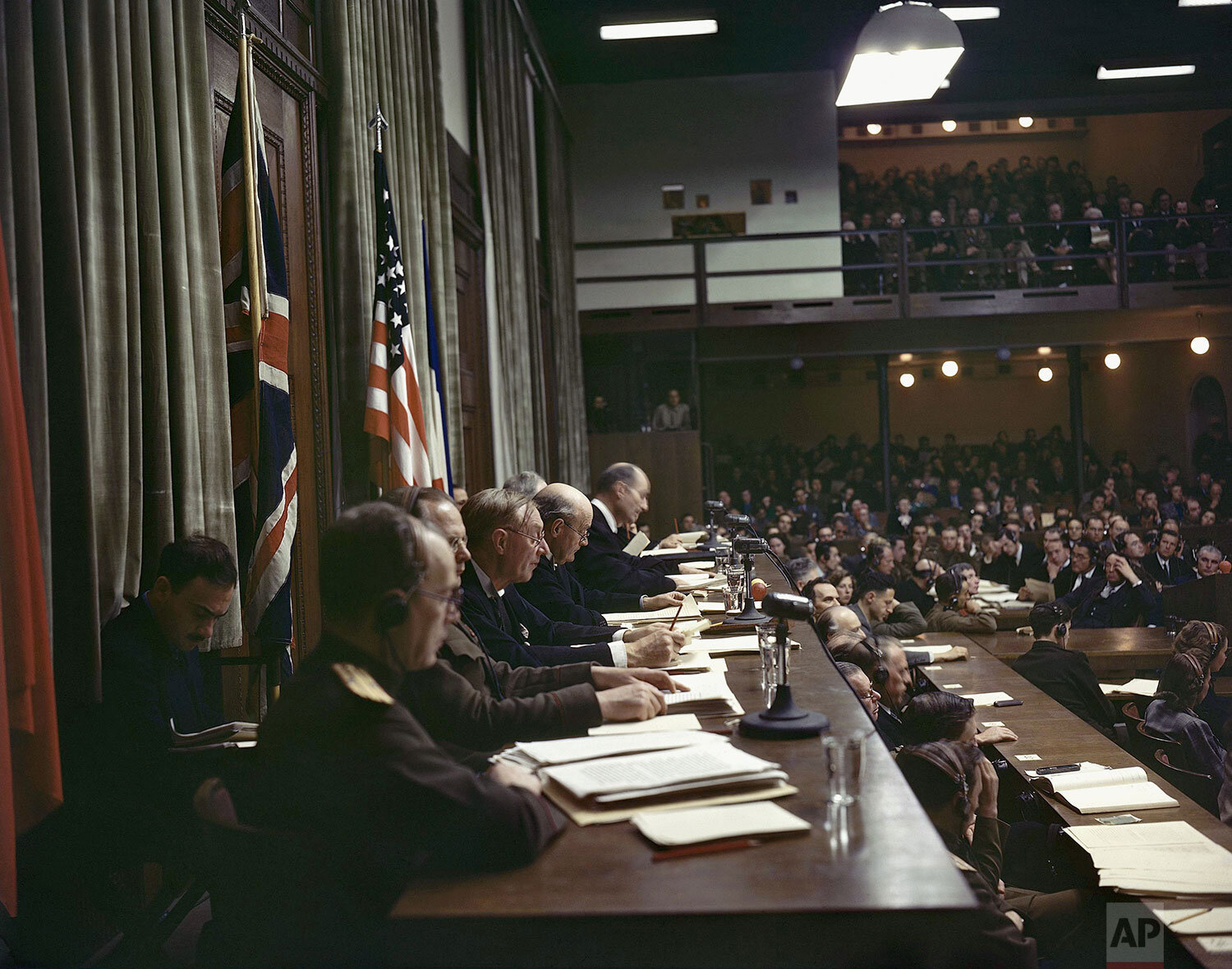
Members of the International Military Tribunal read the verdicts in the courtroom of the Palace of Justice in Nuremberg, Germany, on Sep. 30, 1946. (AP Photo/Eddie Worth)
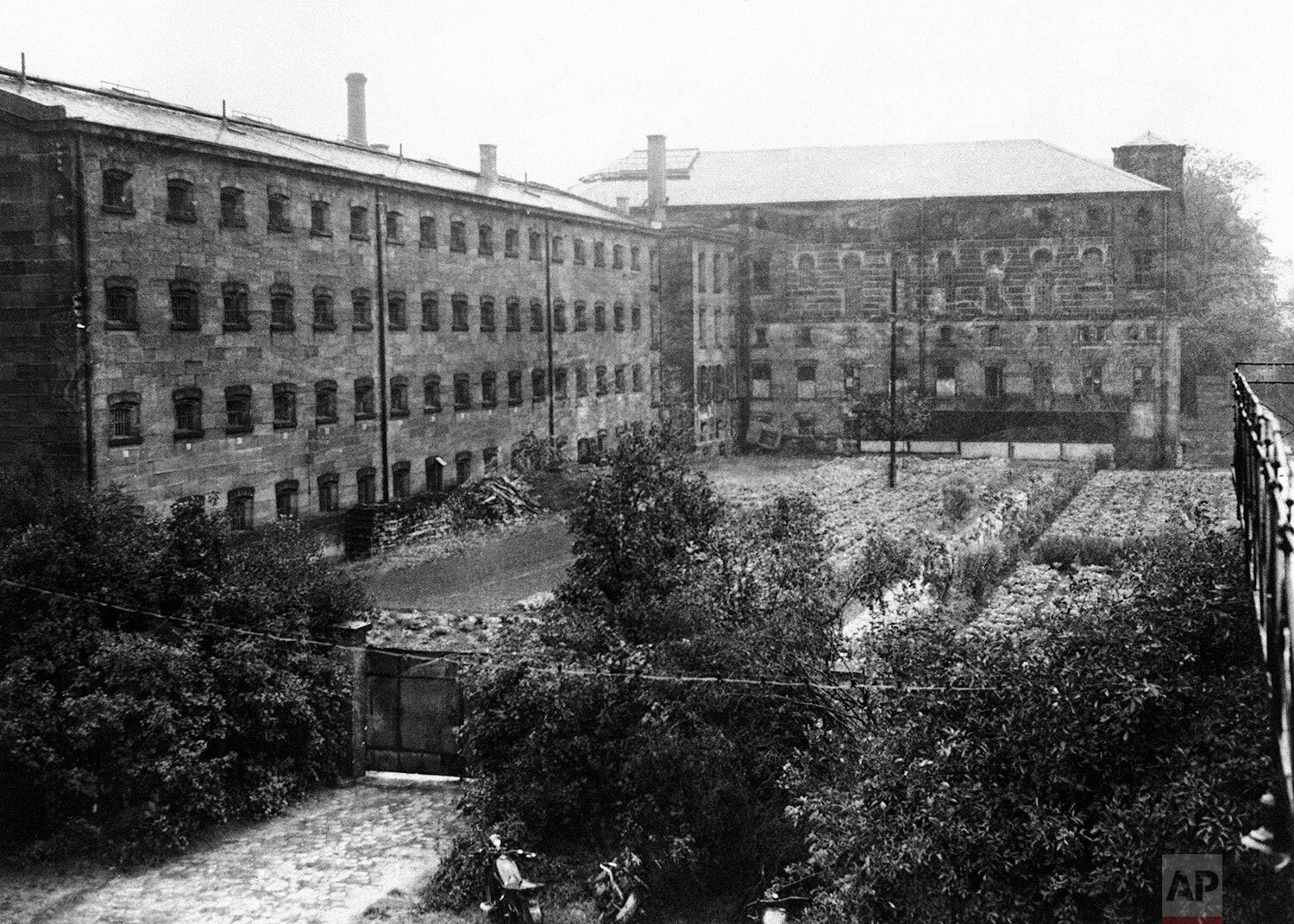
A general view of the prison, adjoining the courtroom at Nuremberg, Germany on Aug. 31, 1945. Here major war criminals are to be housed during their trial. (AP Photo)

A general view of the courtroom during the first morning session in Nuremberg on Nov. 20, 1945. In foreground, left, sit the defendants with a row of guards behind them and their counsel sitting in front of them. (AP Photo/B.I. Sanders)
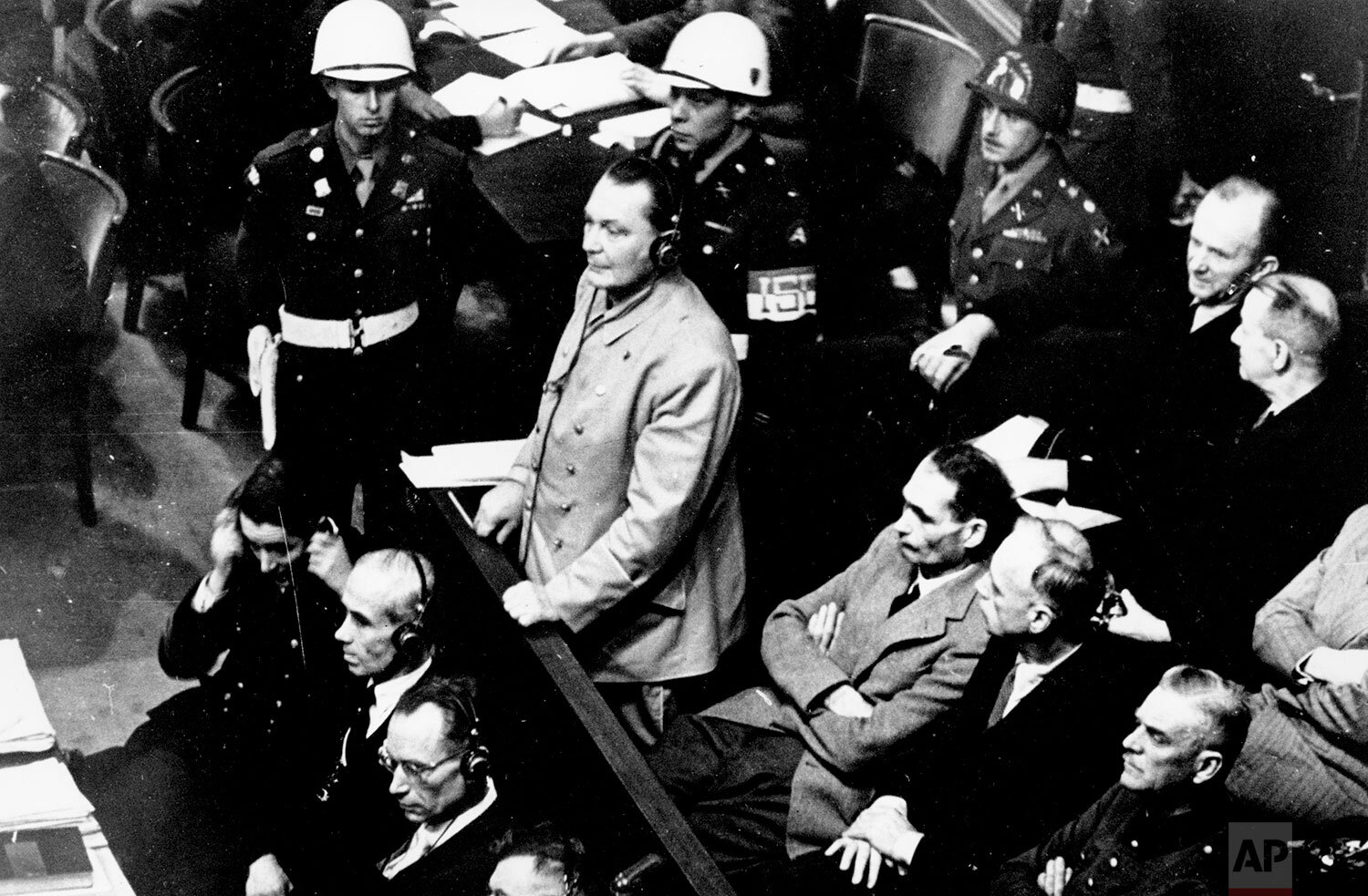
Reichsmarshal Hermann Goering stands in the prisoner's dock at the Nuremberg War Crimes Trial in Germany on Nov. 21, 1945. He is entering a plea of not guilty to the International Military Tribunal Indictment. Goering is wearing headphones of the court translating system. (AP Photo)
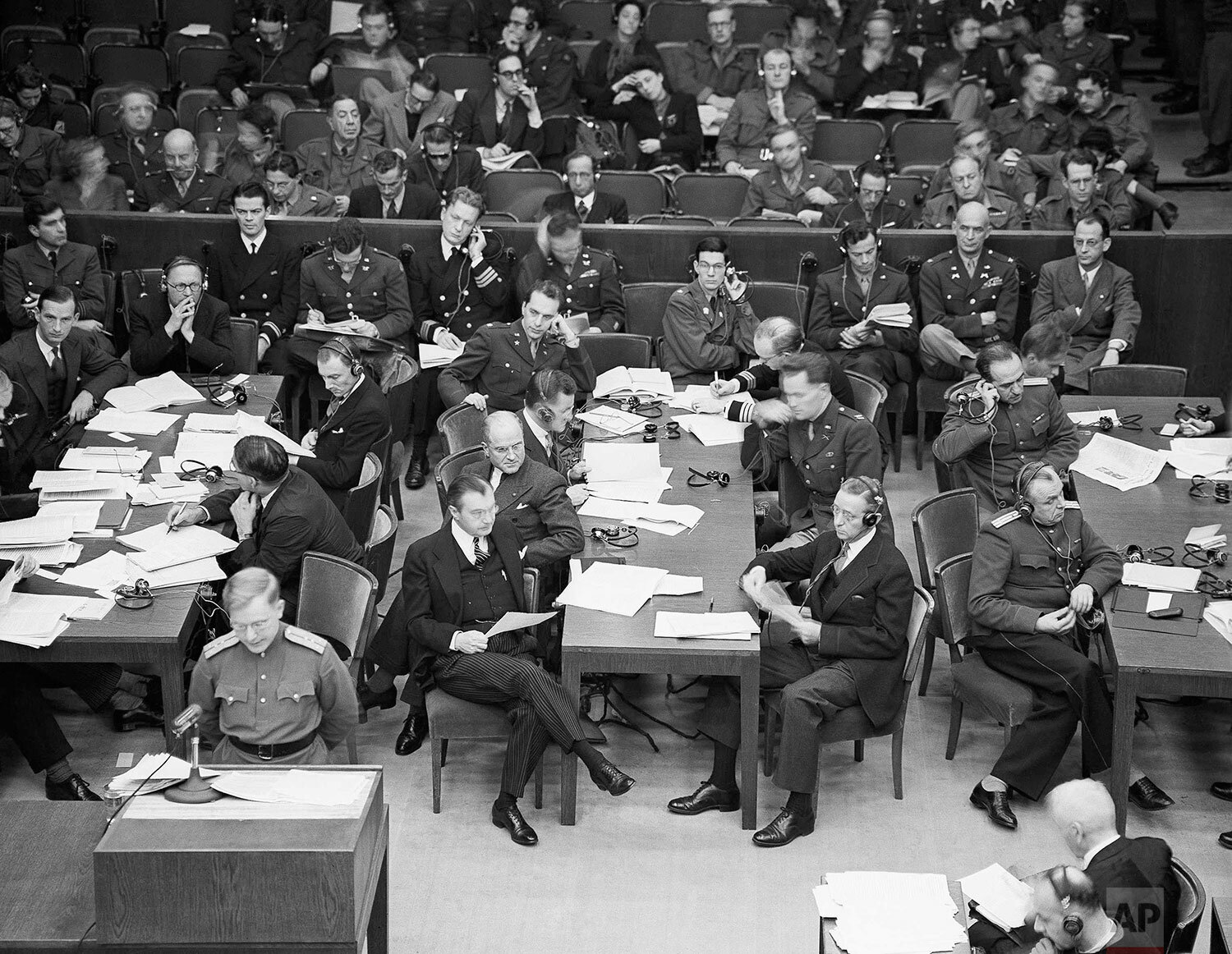
The Russian assistant prosecutor reads the indictment, (lower left) in Nuremberg, Germany on Nov. 28, 1945. The American prosecutors sit at the center table nearest the camera. Left is Justice Robert Jackson and, right, his assistant. Far, left, are the British prosecutors and far, right, the Russian. (AP Photo)
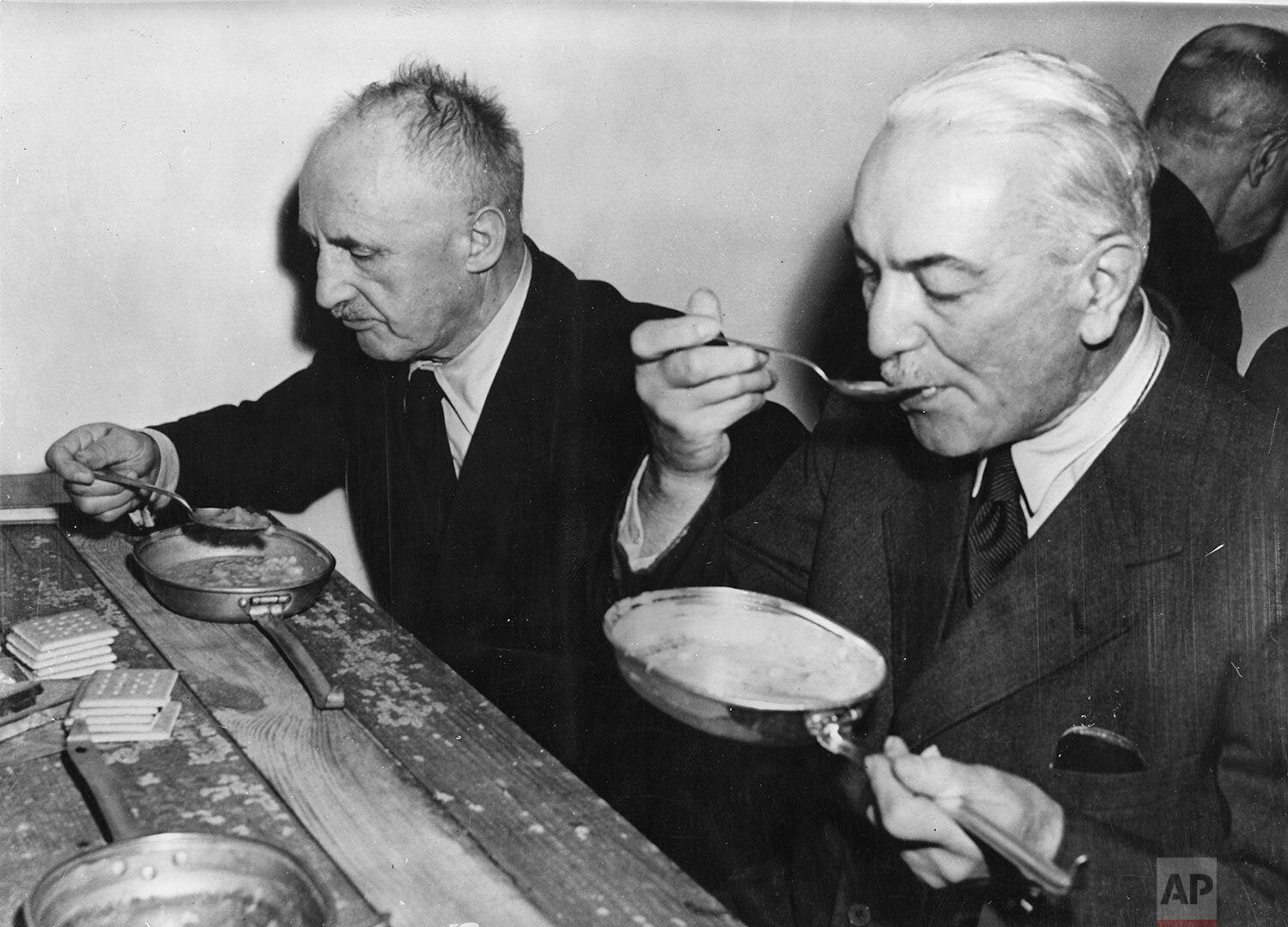
Former Foreign Minister of the German Reich, Dr. Konstantin von Neurath, right, and Julius Streicher eating their lunches from U.S. American Army mess tins on a bare board table, in the Palace of Justice, in Nuremberg, Germany, November 29, 1945. Both are accused of crimes of war. (AP Photo/Sanders)
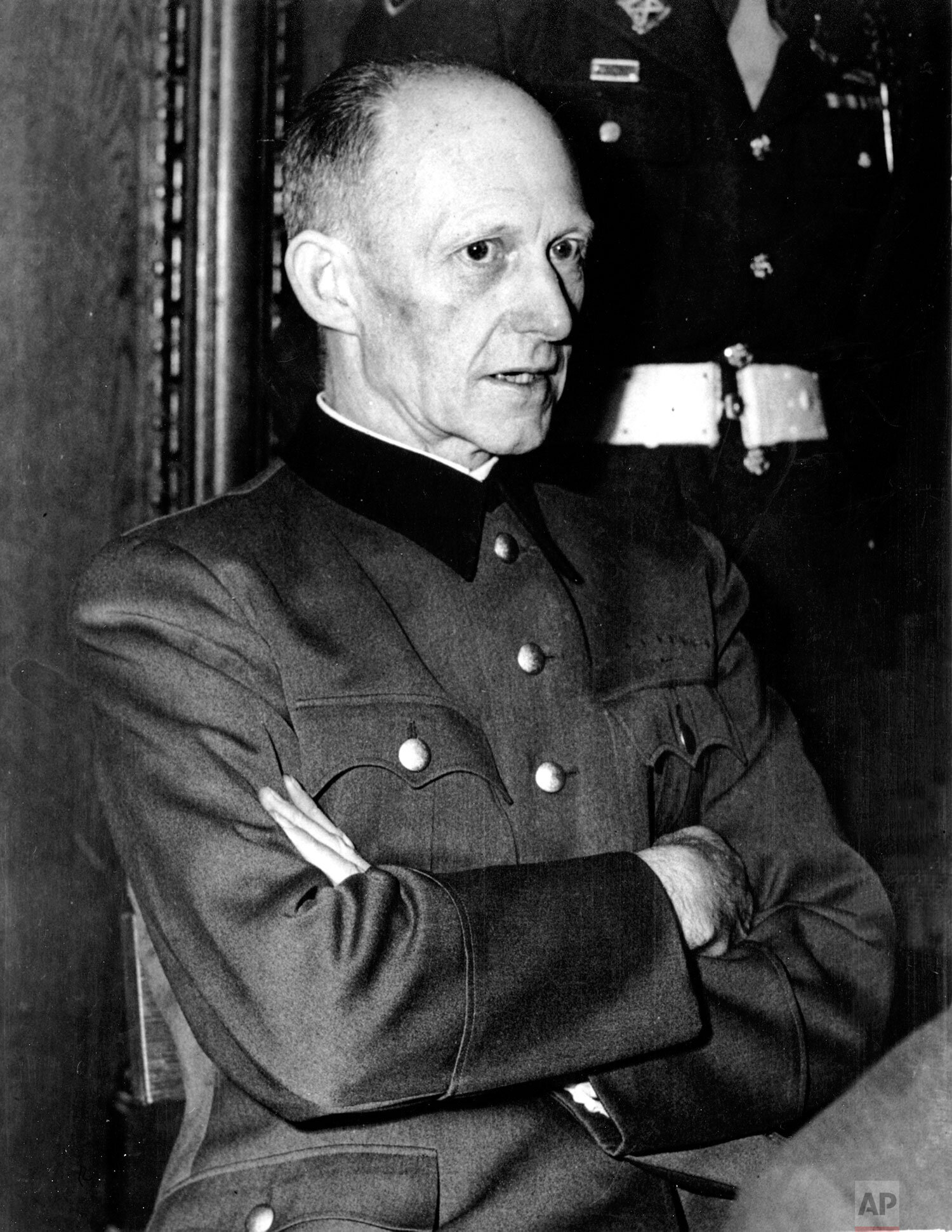
Defendant Alfred Jodl, former general and one of Adolf Hitler's close military advisers during World War II, is seen talking with his arms crossed on Nov. 30, 1945. Jodl is at the proceedings at the Nuremberg War Crimes Trial in Nuremberg, Germany. (AP Photo)
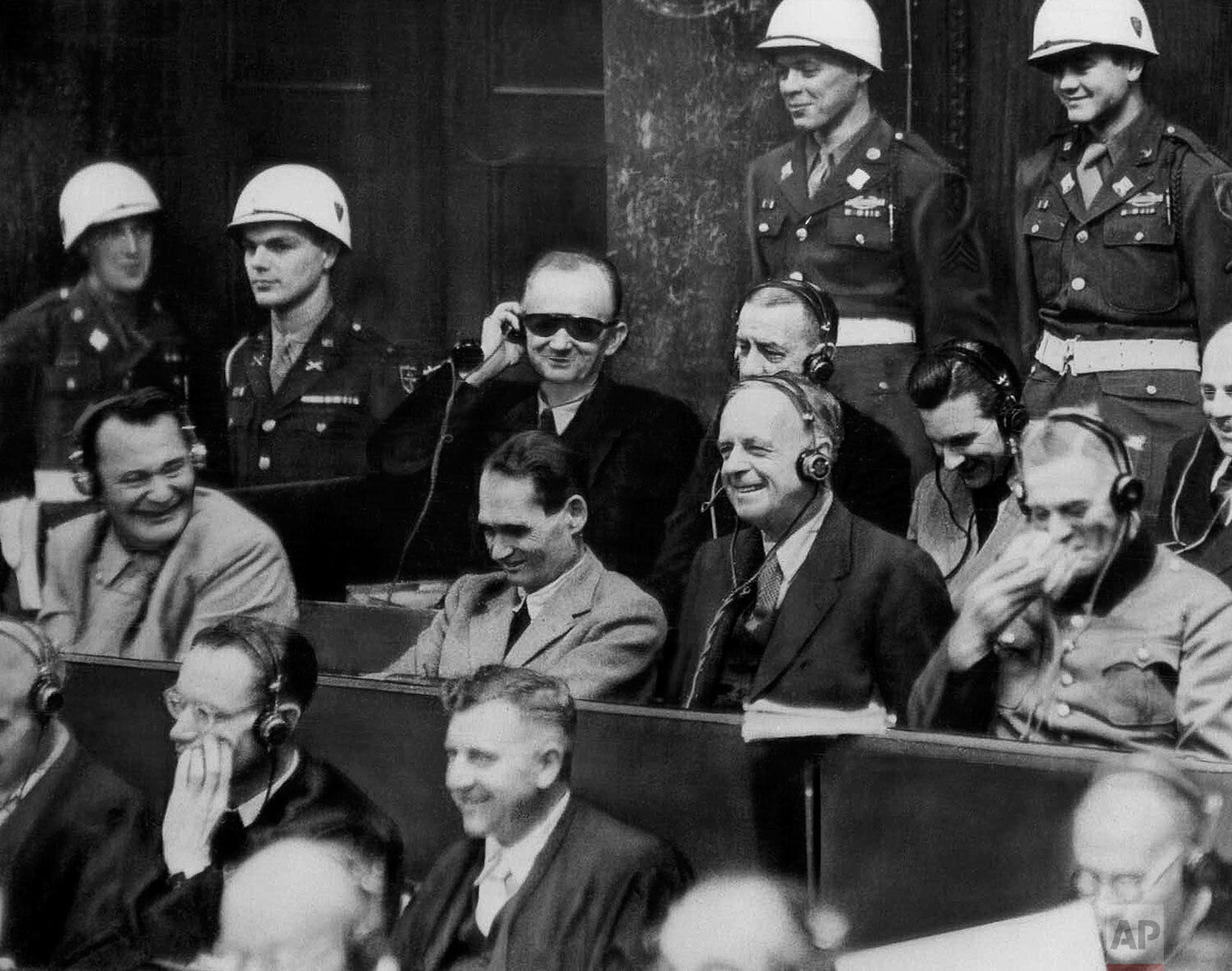
With Hermann Goering, left, getting the biggest laugh out of the proceeding, Nazi war criminals break out into laughter as evidence is introduced at Nuremberg, Germany on Nov. 30, 1945. Even the American guards enjoy the ‘joke.’ In the front row of the prisoners’ box are, left to right: Hermann Goering, Rudolf Hess, Joachim Von Ribbentrop and Field Marshal Wilhelm Keitel. In the back row, left to right: Grand Admiral Karl Doenitz, Grand Admiral Erich Raeder, Baldur Von Schirach and Fritz Sauckel. (AP Photo/Eddie Worth)
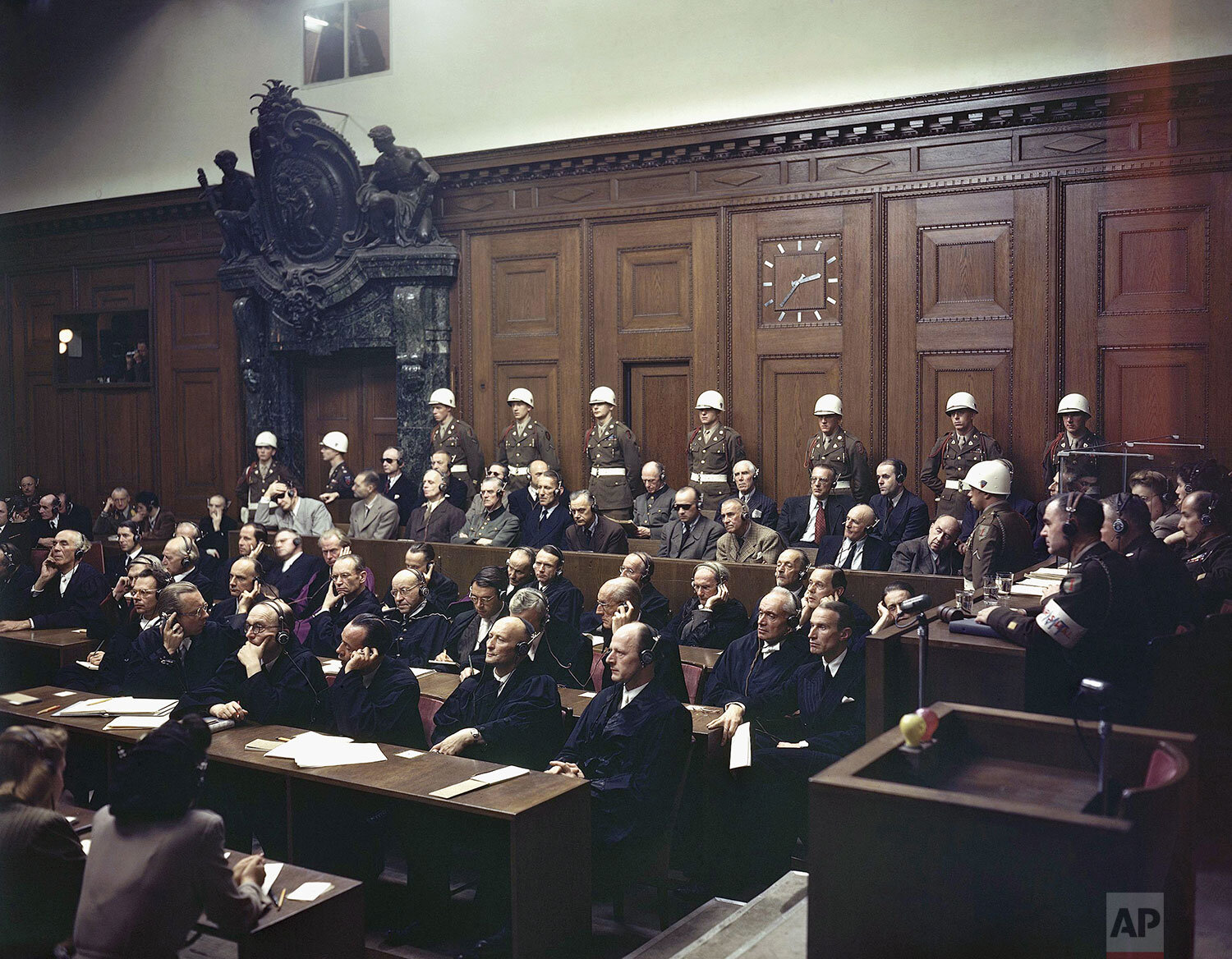
Defendants listen to part of the verdict in the Palace of Justice during the Nuremberg War Crimes Trial in Nuremberg, Germany on Sept. 30, 1946. Seated in the first row in the prisoner's dock are, from left: Hermann Goering, wearing dark glasses; Rudolf Hess; Joachim von Ribbentrop; Wilhelm Keitel; Ernest Kaltenbrunner; Alfred Rosenberg; Erich Raeder, wearing dark glasses; Wilhelm Frick; Julius Streicher;and Walter Funk. In the back row in front of the police guards are, from left: Karl Doenitz; Constantin von Neurath; Baldur von Schirach, wearing dark glasses; Fritz Sauckel; Alfred Jodl; Franz von Papen; Arthur Seyss-Inquart; and Albert Speer. Seated at the tables in front of the defendants are their council. (AP Photo/Eddie Worth)
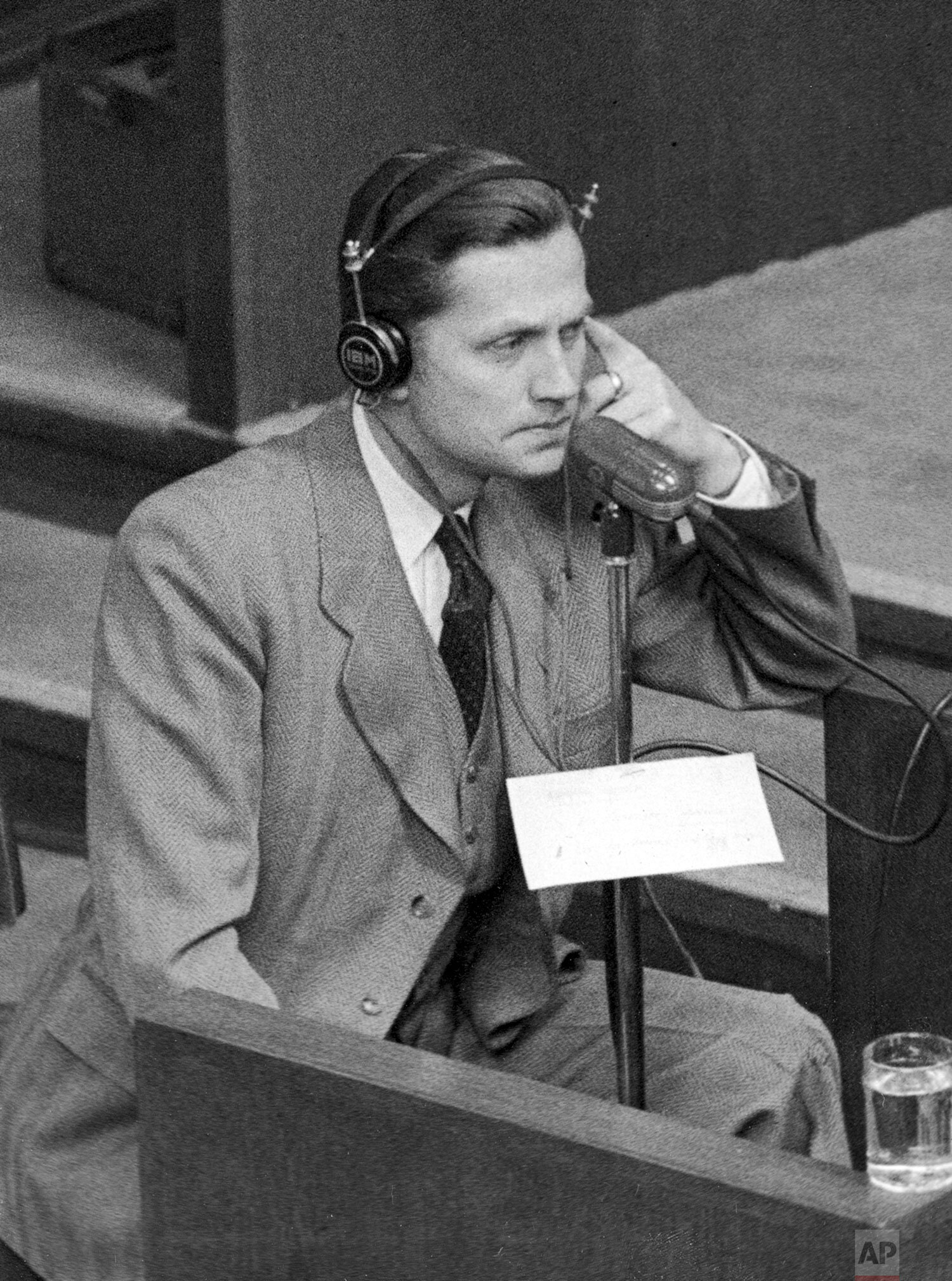
Former German Nazi SS-Brigadefuehrer and former head of foreign intelligence Walter Schellenberg is seen in the witness box on January 4, 1946 in Nuremberg, Germany during the war crime trials whilst giving evidence. (AP Photo/Eddie Worth)

Rudolf Hess, right, has asked permission of the international military tribunal to be allowed to act as his own attorney “from now until the end of the trial.” He is discussing his application during a recess in the Nuremberg trial, with Goering, Ribbentrop and two lawyers on Jan. 28, 1946. Goering appears to be taking a keen interest in the proceedings. (AP Photo)
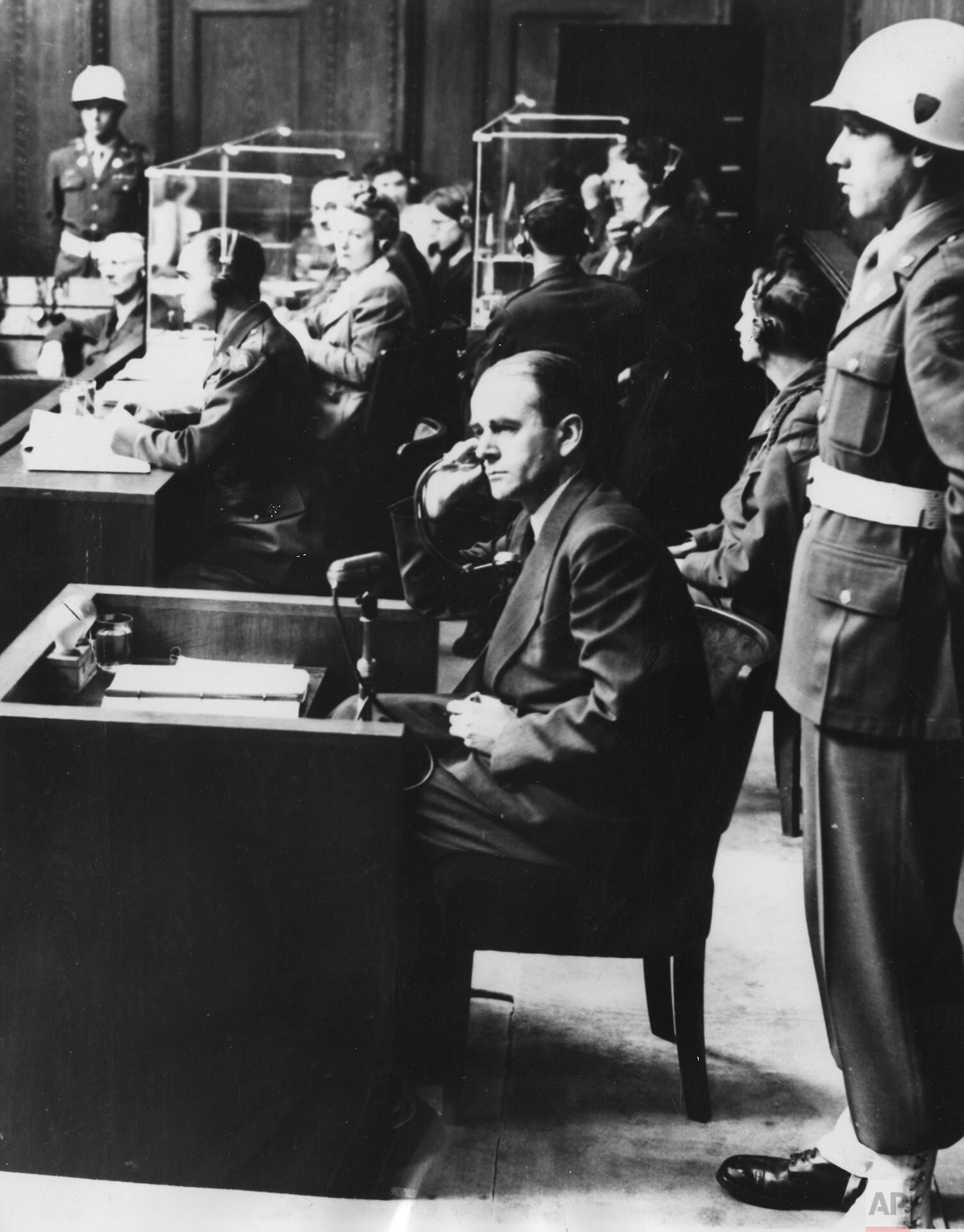
Albert Speer, Hitler's former architect and armament minister during WW II, a defendant in the war crimes trial at Nuremberg, Germany is pictured in court in Nuremberg, September 12, 1946. (AP Photo)
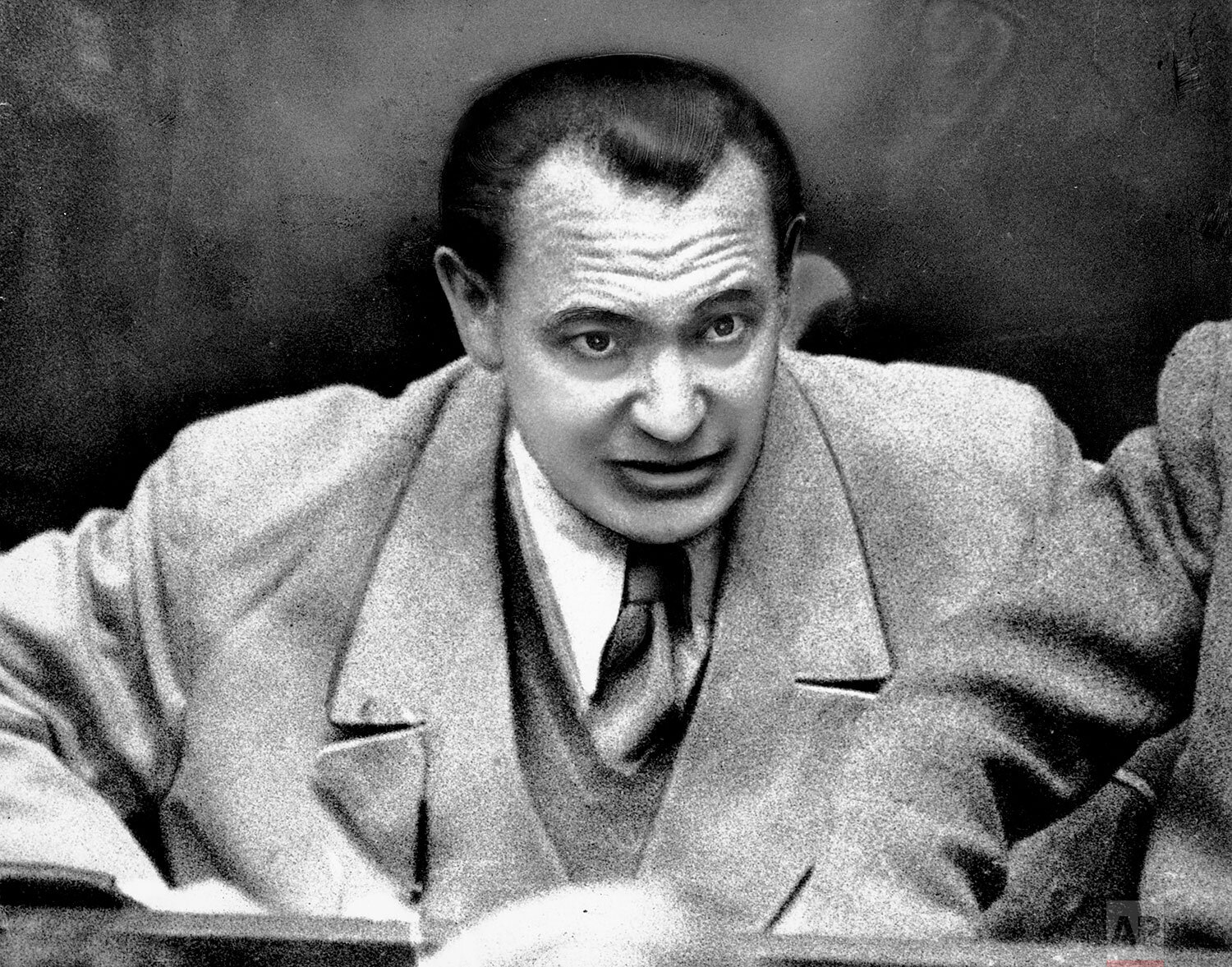
Reichsmarshal Hermann Goering listens to parts of the verdict given in the courtroom in the Palace of the Justice during the Nuremberg War Crimes Trial in Germany on Sept. 30, 1946. In the final session on Oct. 1st, the court sentenced Goering to hang for his crimes during World War II. Goering committed suicide before his execution took place. (AP Photo)
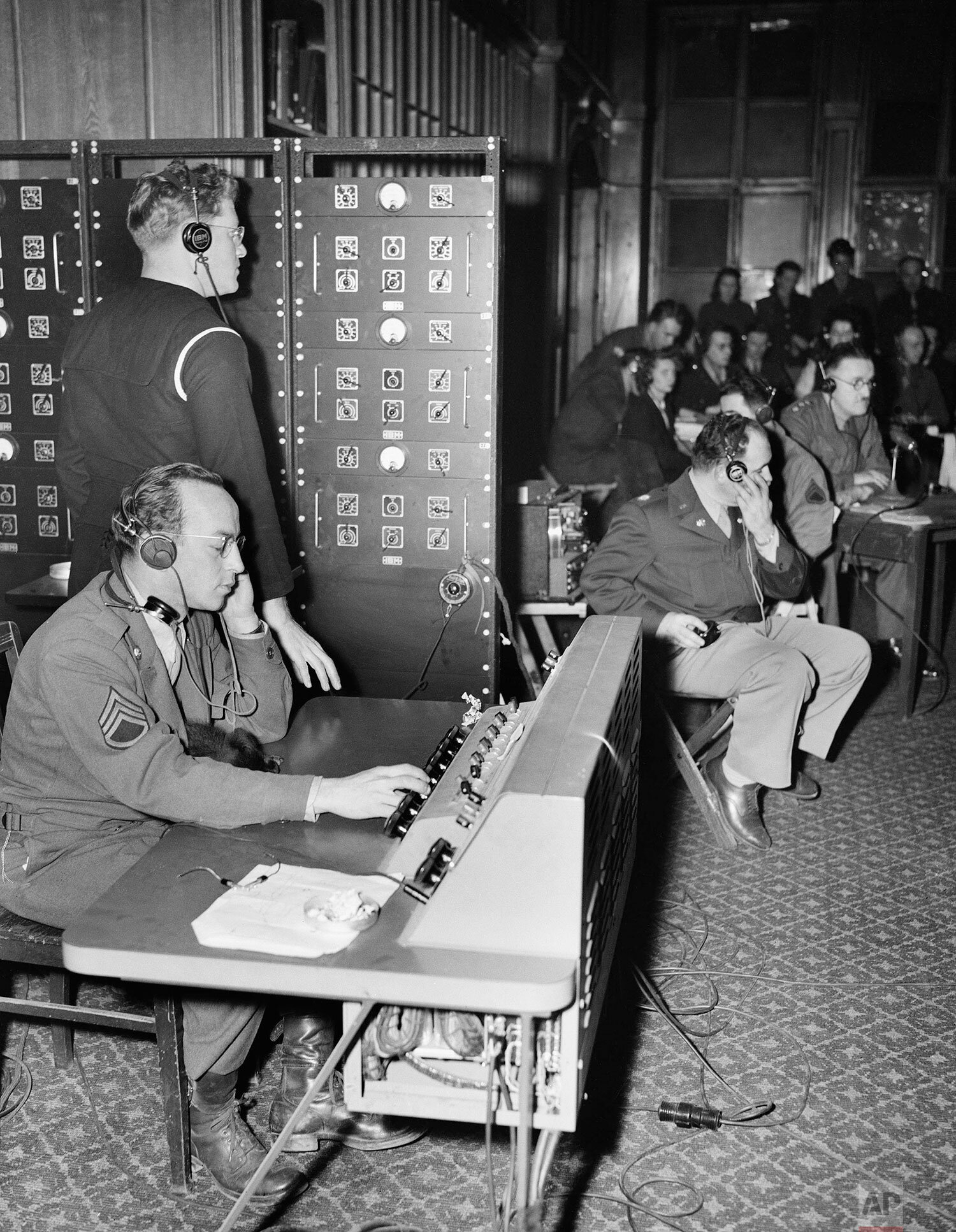
Interpreters and audio technicians work behind the scenes at the Nuremburg trials, in Nuremburg, Germany, Nov. 18, 1945. (AP Photo/B.I. Sanders)
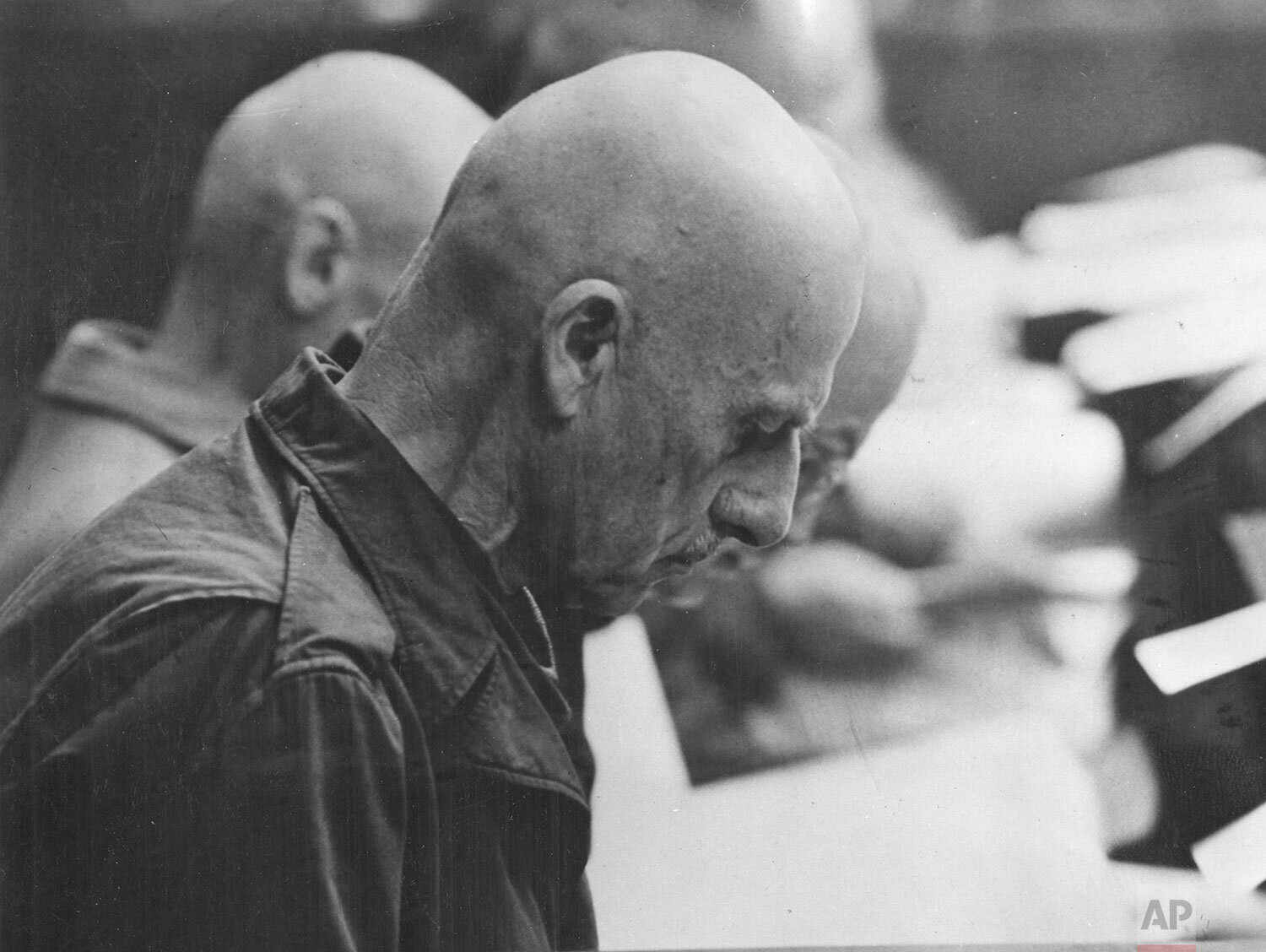
German Fieldmarshal Wilhelm Leeb, is pictured during the Nuremberg Trials, Case 12, as he reads the letter of accusations against himself and other high ranking German officers during WW II, in the courthouse in Nuremberg, Germany, November 11, 1947. (AP Photo)
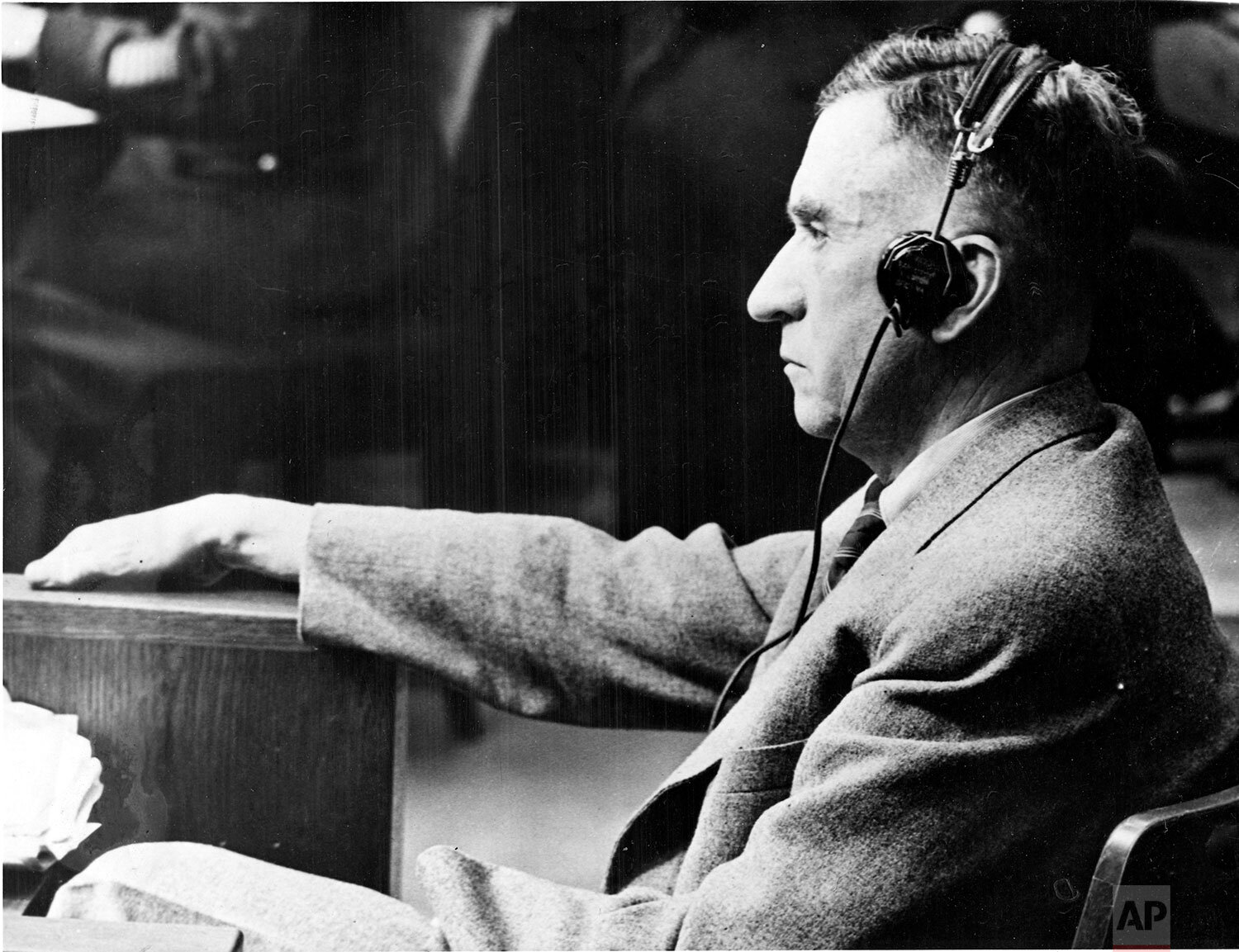
Carl Krauch, the main defendant of case 6 and former chairman of the managing board of directors of the I.G. Farben Cemical Industries, takes the stand to testify in his own defense at the U.S. Military Tribunal in Nuremberg, Germany, January 13, 1948. (AP Photo)
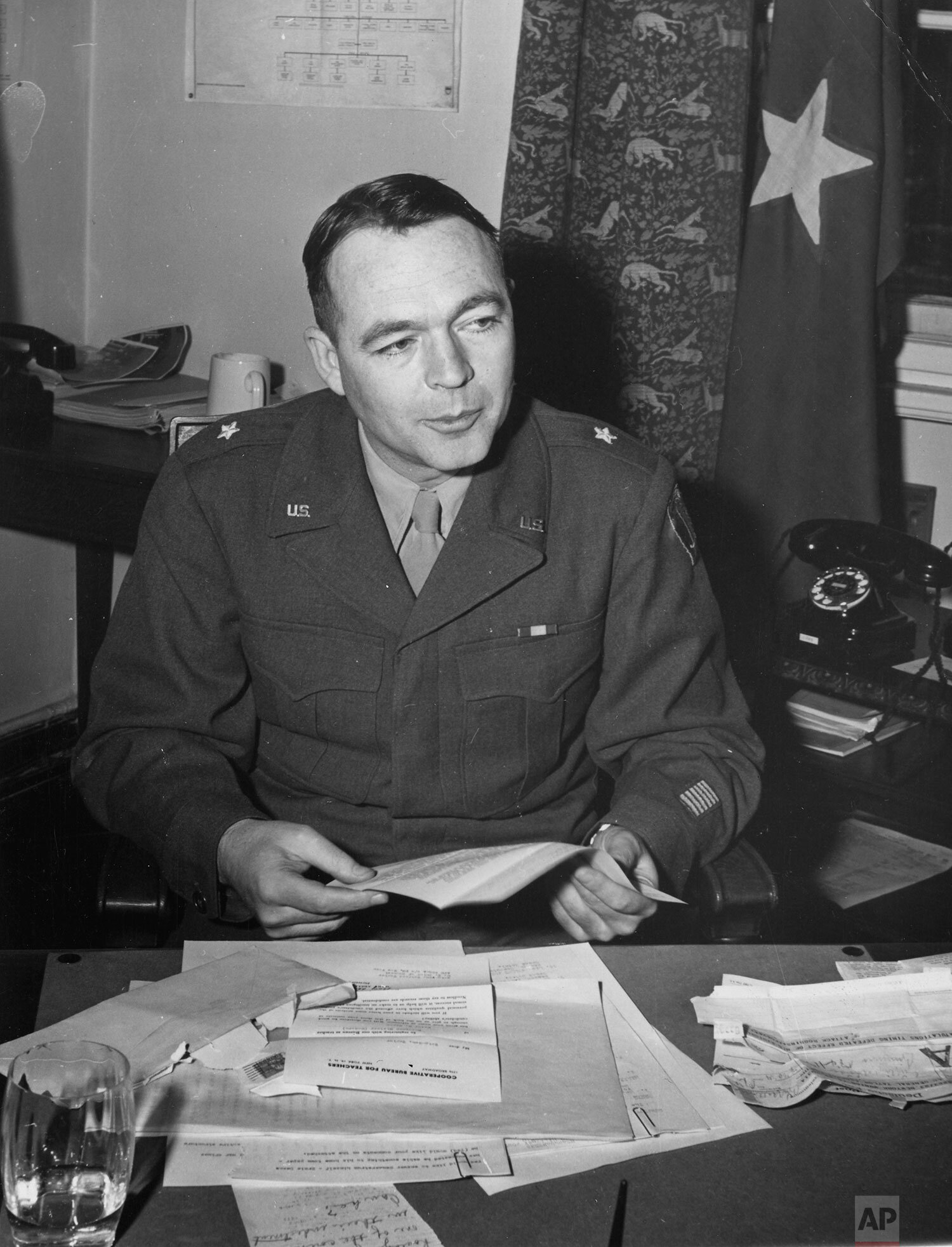
Portrait of U.S. General Telford Taylor, chief prosecutor for war crimes at the International Military Tribunal in Nuremberg, Germany, in his office March 5, 1948. (AP Photo/Hanns J. Jaeger)
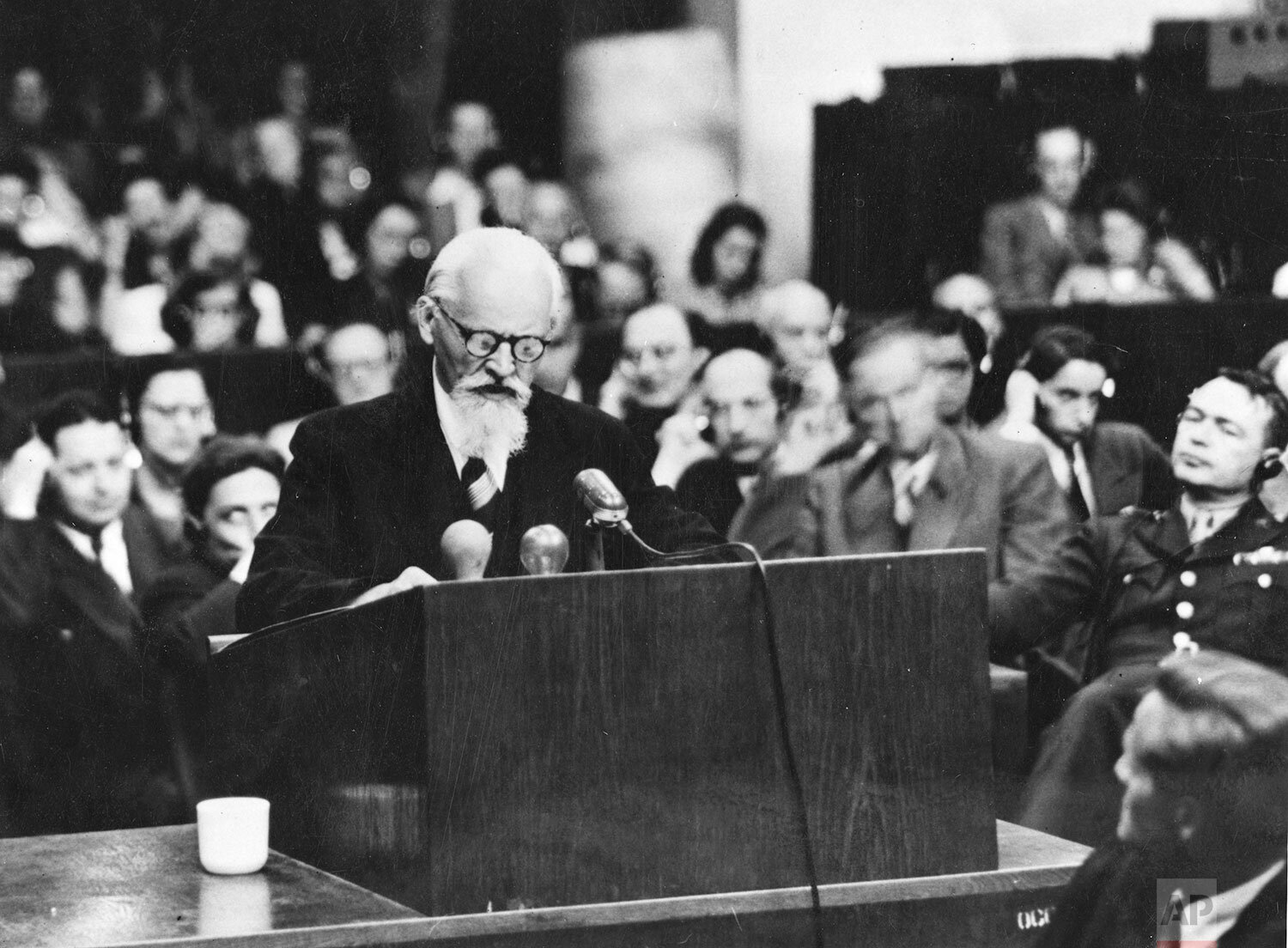
Hermann Schmitz, former chairman of the managing board of directors of the I.G. Farben Chemical Industries gives his final plea at the U.S. Military Tribunal in Nuremberg, Germany, June 11, 1948, concluding his defense with the statement: "My conscience is clear and I feel free from any fault." (AP Photo/Str)

Director of the document section of the Nuremberg Trials, Fred Niebergall, receives a stack of papers from a German file clerk in one of the many rooms full of documents, in the Nuremberg Palace of Justice Building, Germany on June 16, 1948. Mr. Niebergall has been in charge of the trial documents since August 1945 before the trials started. Sixty-thousand documents are on file. (AP Photo)
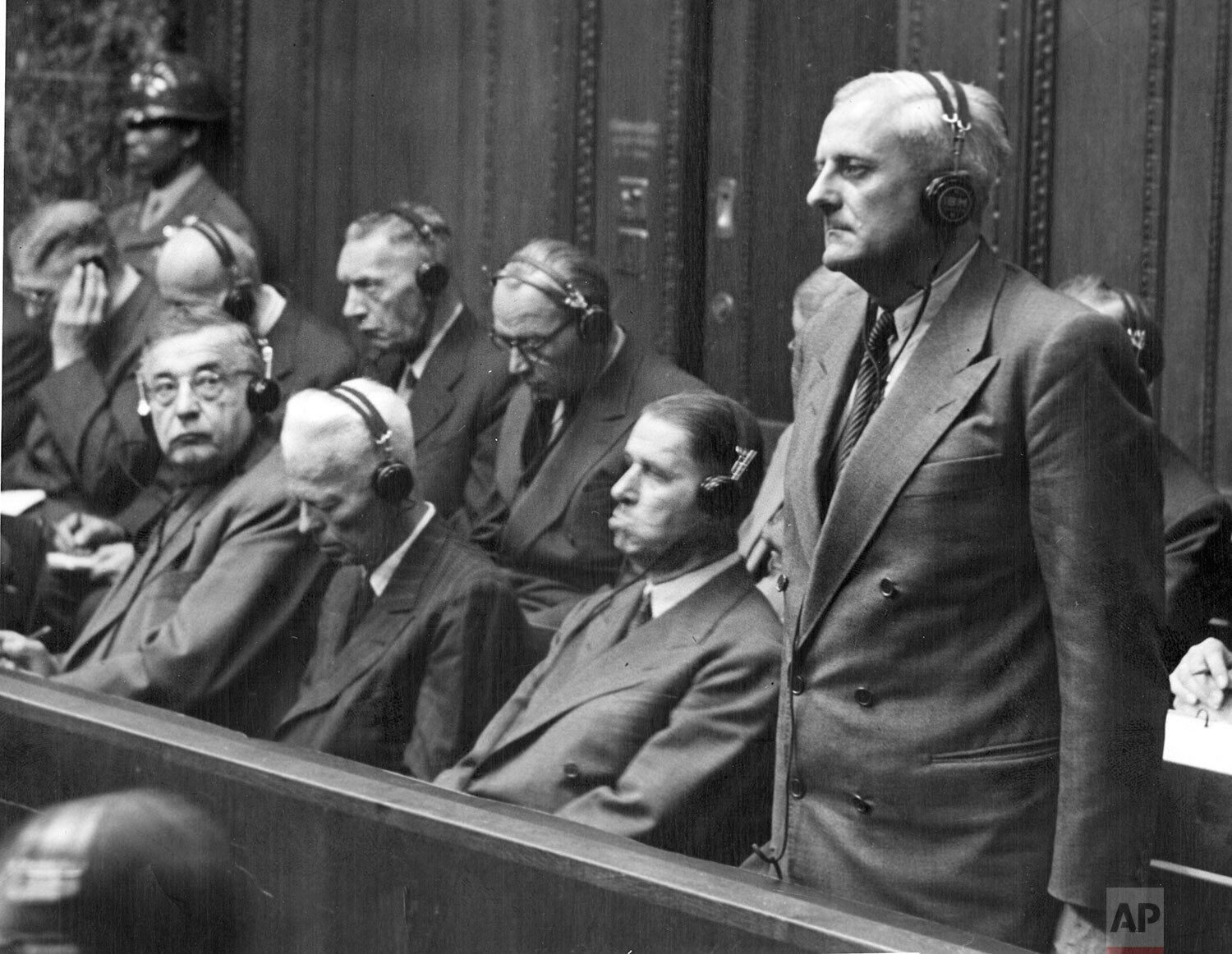
Otto Ambros, standing, listens to his verdict of eight years in prison by the U.S. Military Tribunal in Nuremberg, Germany, July 30, 1948. Ambros was chief of the chemical warfare Committee of the Ministry for Araments and War Production and manager of several of the I.G. Farben's plants, including the Auschwitz plant. (AP Photo)
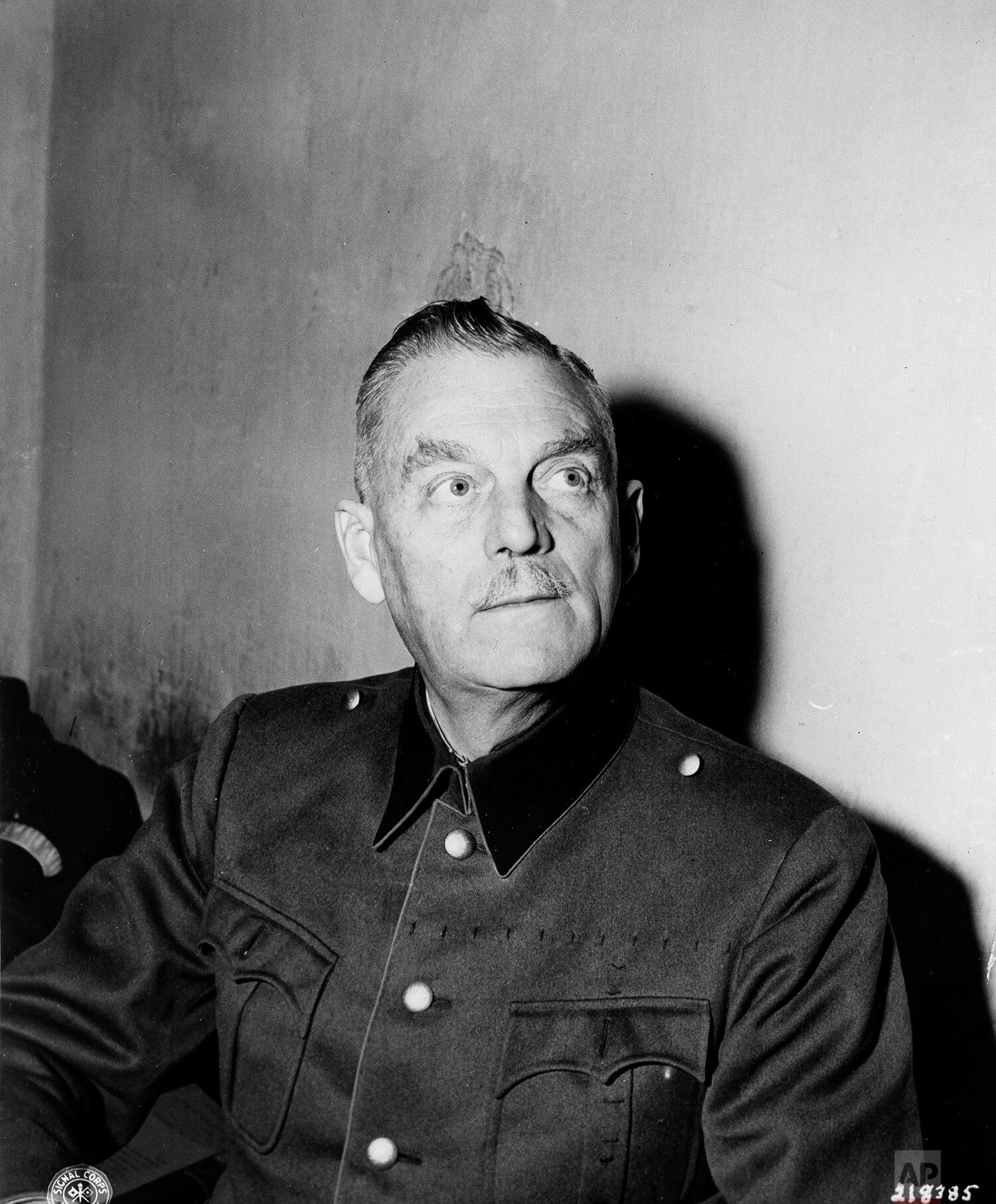
Wilhelm Keitel, defendant at the war crimes trials, in his cell in the city jail, Nuremberg, Germany, Nov. 24, 1945. The former German leaders are being held there by the International Military Tribunal. (AP Photo)
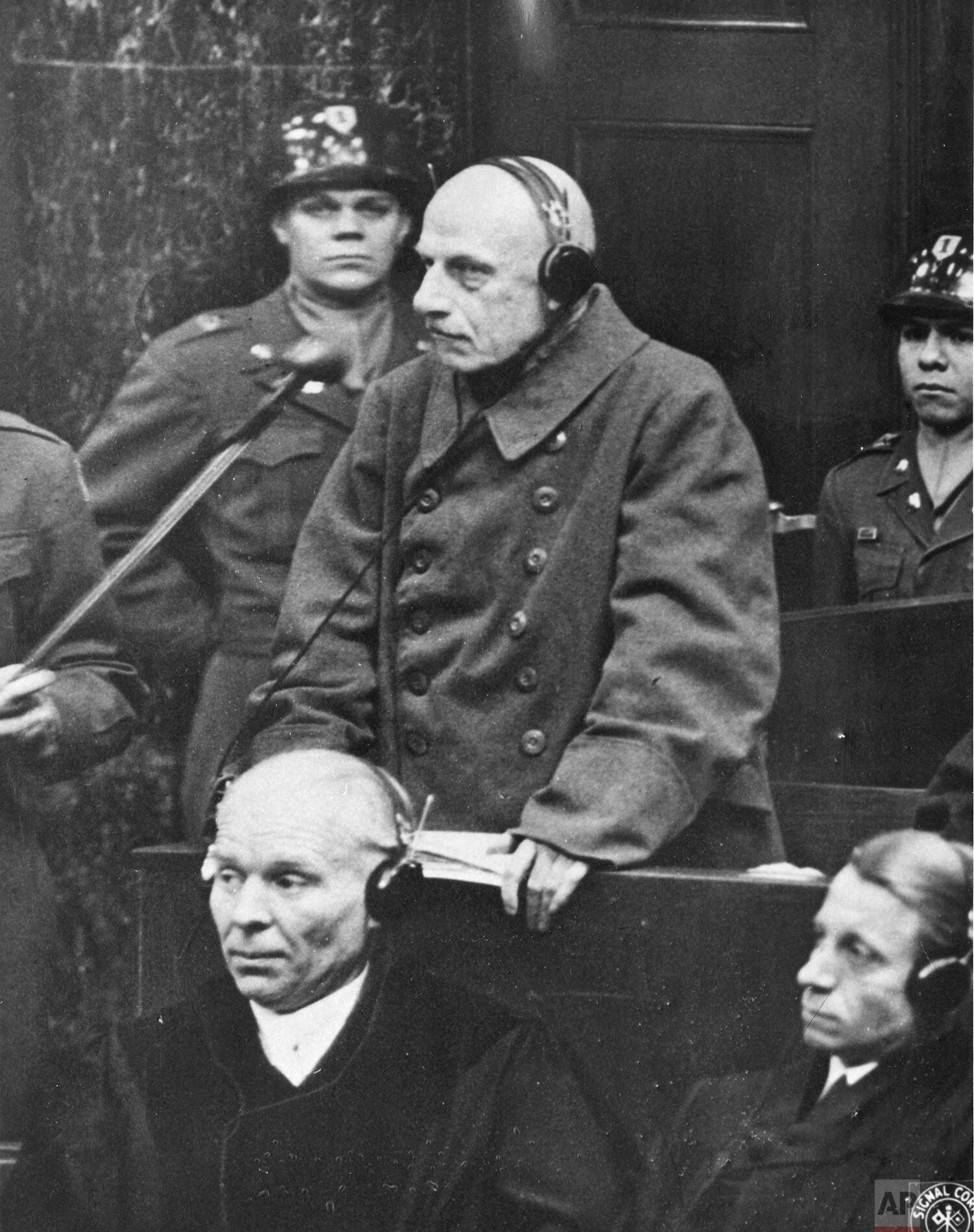
Defendant German Fieldmarshal Wilhelm Leeb pleads not guilty during the Nuremberg Trials, Case 12, in the courthouse in Nuremberg, Germany, at the opening of the case against himself and other high ranking German officers during WW II December 30, 1947. (AP Photo)
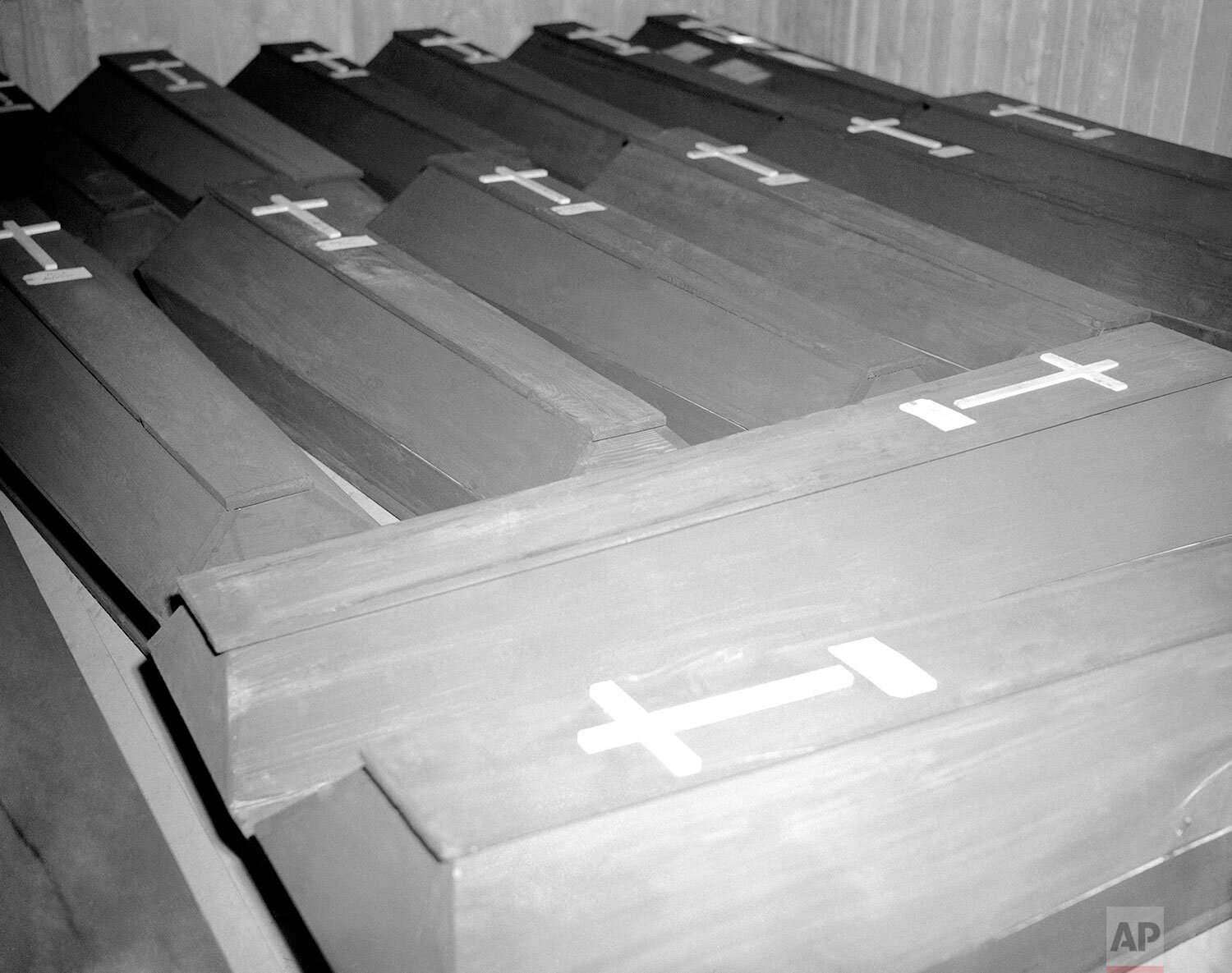
These coffins contain bodies of Nazis executed at Landsberg, Germany on May 28, 1946, in the first day of a two-day mass execution of 28 persons convicted last December of killing thousands of innocent victims by medical experiments, unleashing of hungry dogs, sadistic tortures, and malnutrition at Dachau concentration camp. Fourteen executions were carried out each day. (AP Photo/Robert Clover)
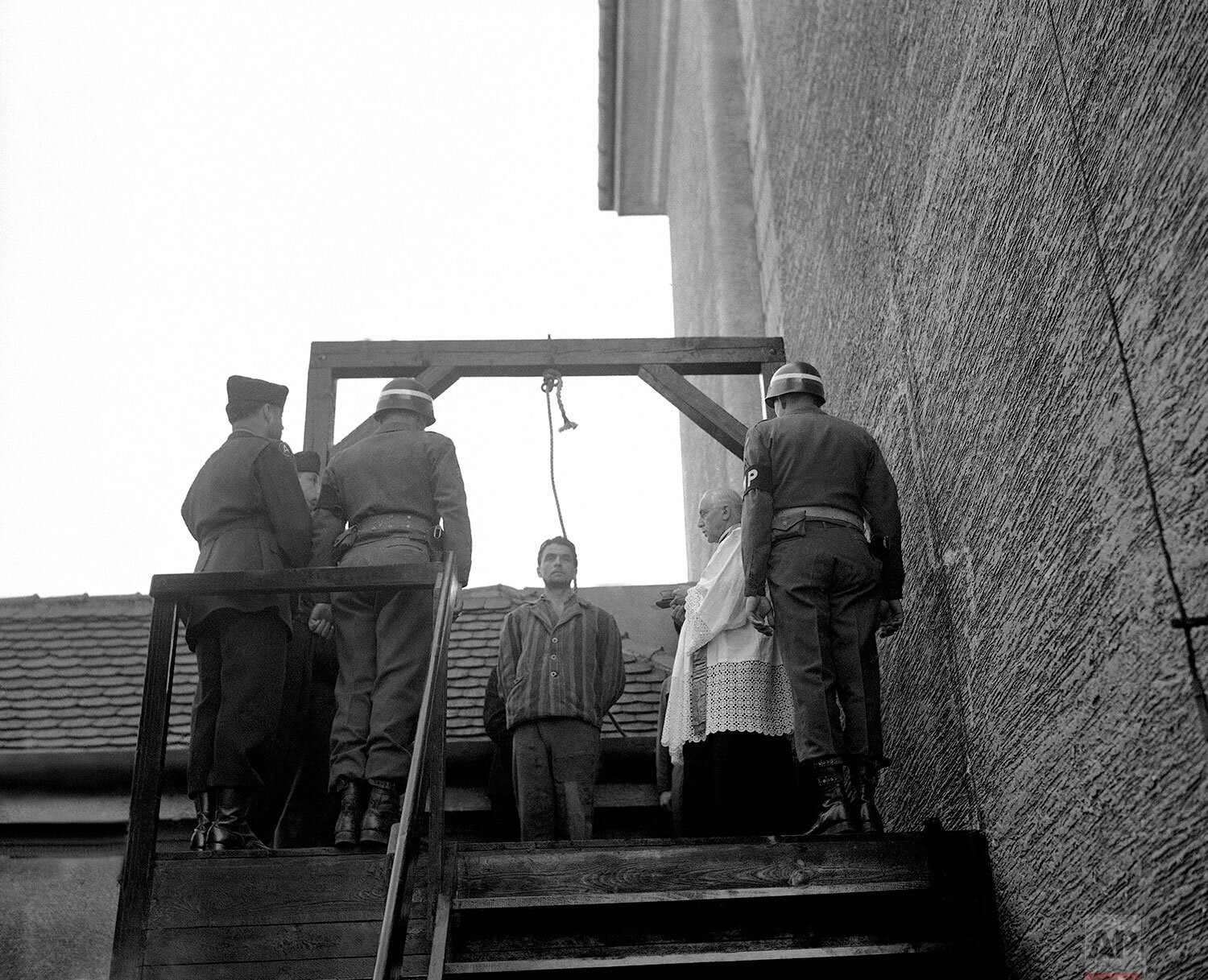
Simon Kiern, 32, former Nazi censor and block leader convicted at Dachau of kicking to death prisoner who had fallen to ground, is prepared to be hung by U.S. military authorities at Landsberg, Germany on May 28, 1946. (AP Photo/Robert Clover)
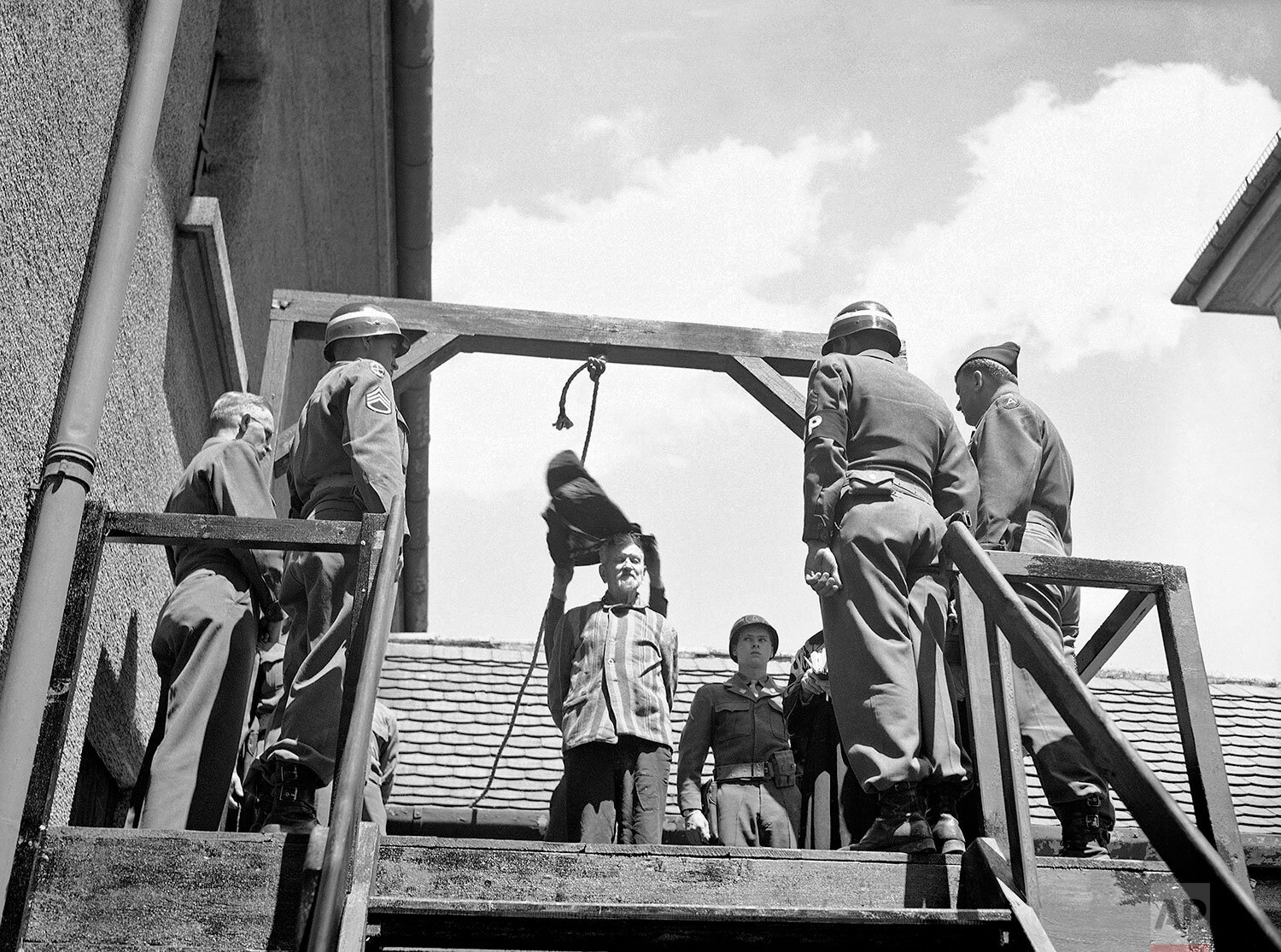
U.S. military authorities prepare to hang Dr. Klaus Karl Schilling, 74, at Landsberg, Germany on May 28, 1946. In a Dachau war crimes trial he was convicted of using 1,200 concentration camp prisoners for malaria experimentation. Thirty died directly from the inoculations and 300 to 400 died later from complications of the disease. His experiments all with unwilling subjects began in 1942. (AP Photo/Robert Clover)
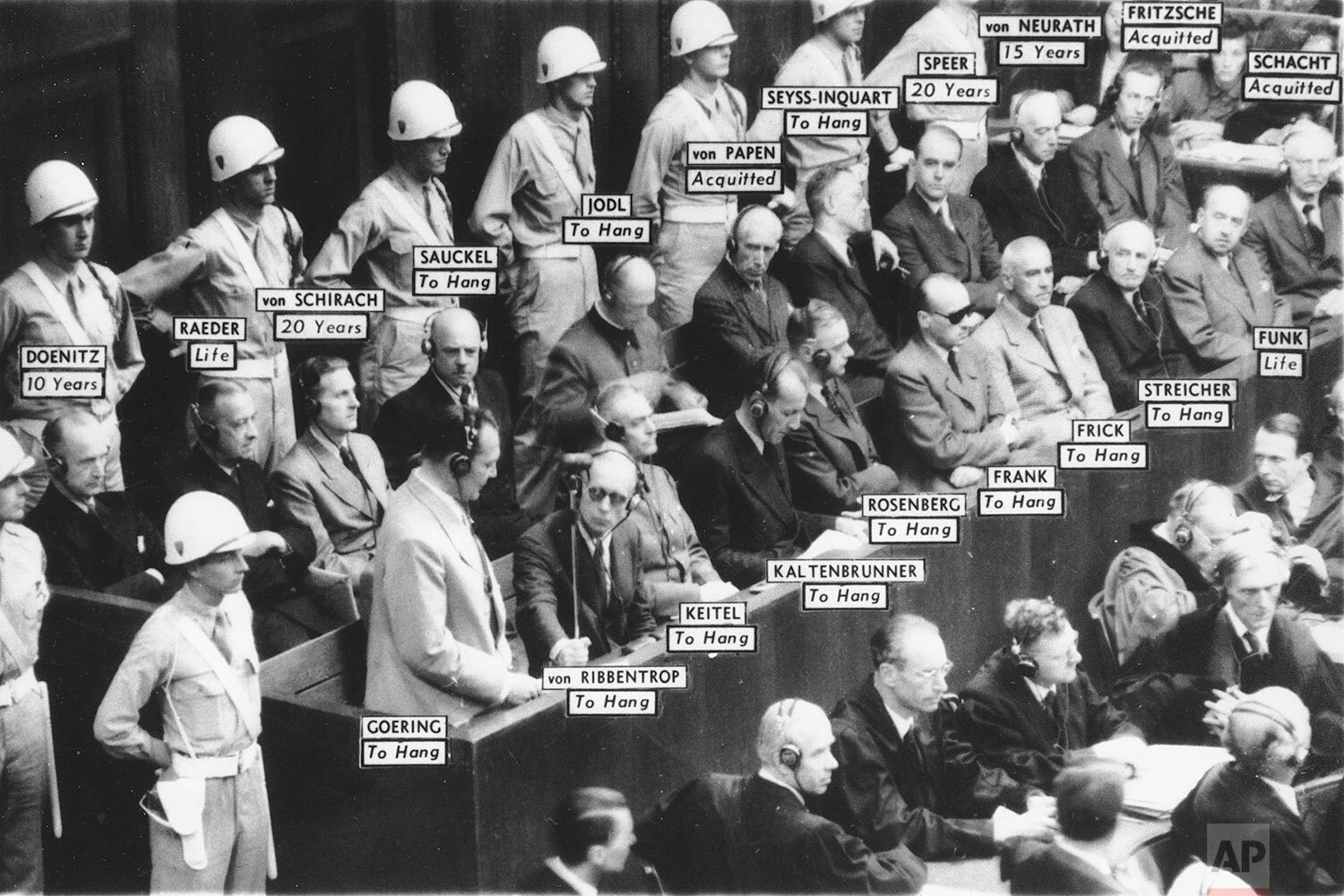
Hermann Goering, standing in foreground in the dock, makes his final plea during the latter stages of the Nuremberg War Crimes Trial in the Justice Palace in Germany on Oct. 1, 1946. Each defendant's name and sentences imposed by the International Tribunal is listed on this photograph. Rudolf Hess, who received a life sentence, is hidden behind Goering. The others in the front row, from left, are, Goering; Joachim von Ribbentrop; Wilhelm Keitel; Ernest Kaltenbrunner; Alfred Rosenberg; Frank, wearing dark glasses; Wilhelm Frick; Julius Streicher; and Walter Funk. Second row, from left, are, Karl Doenitz; Erich Raeder; Baldur von Schirach; Fritz Sauckel; Alfred Jodl; Franz von Papen; Arthur Seyss-Inquart; Albert Speer; Constantin von Neurath; Fritzsche; Schacht. (AP Photo)
Text from the story Germany marks 75th anniversary of landmark Nuremberg trials by David Rising.

